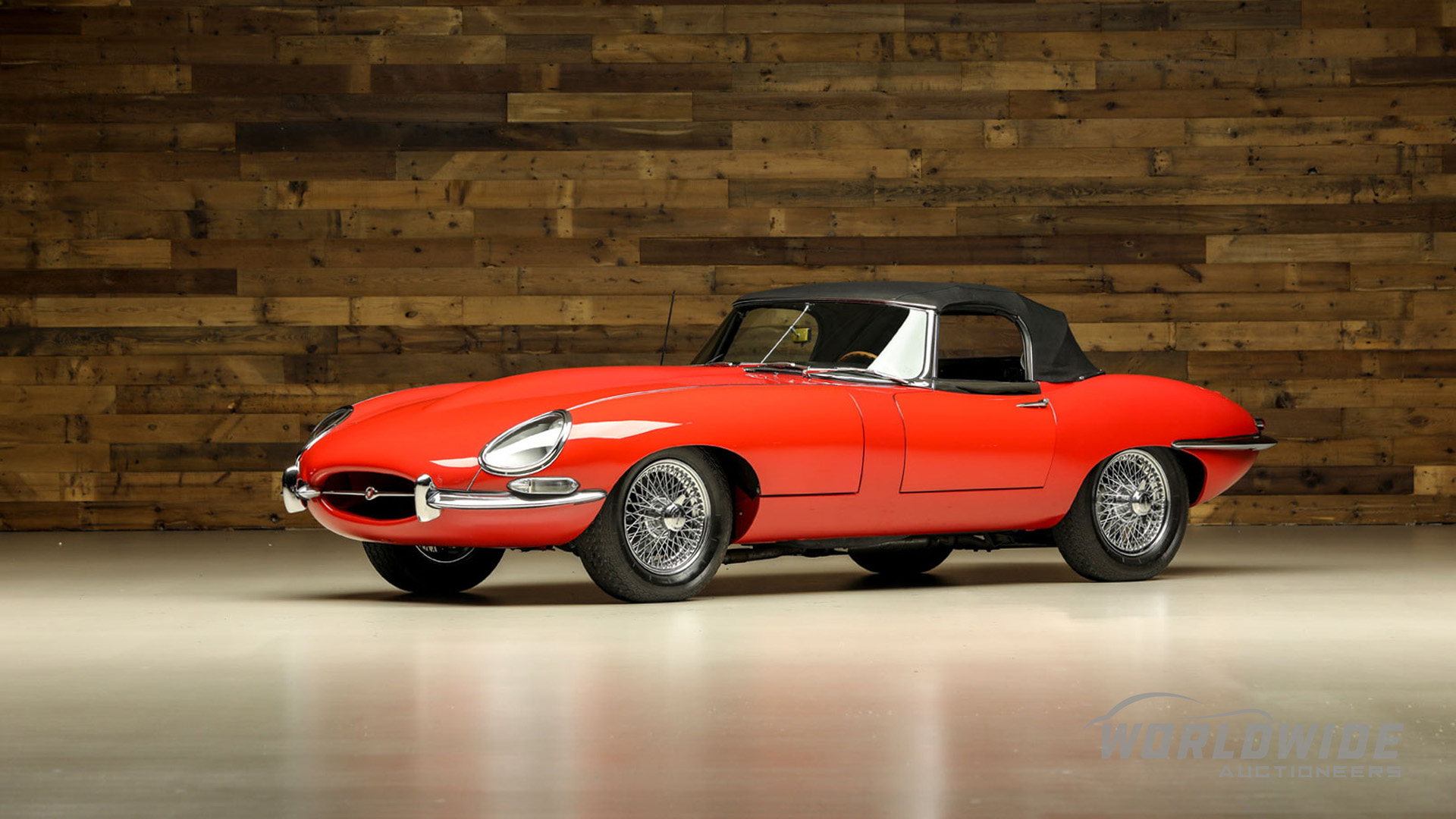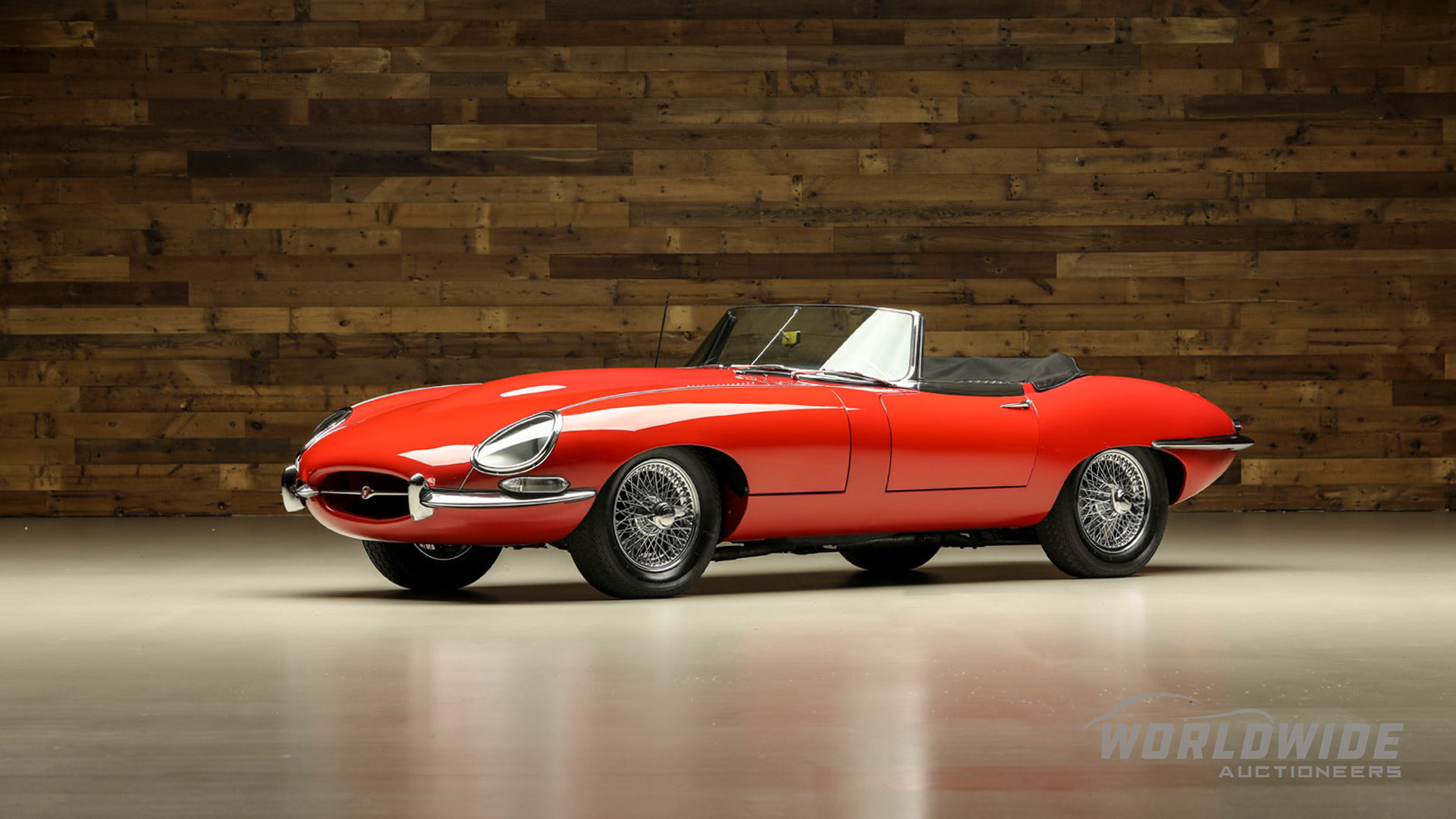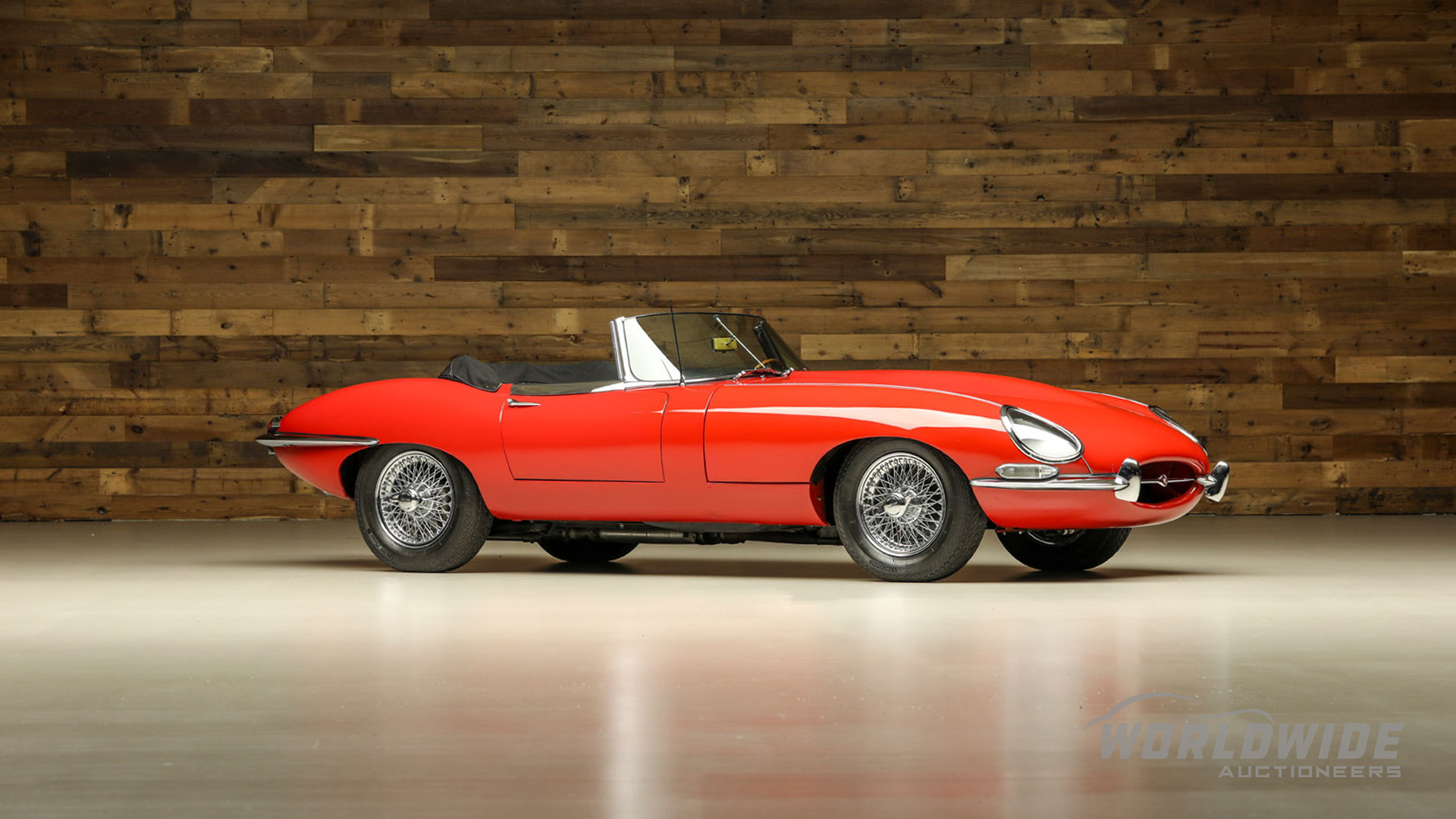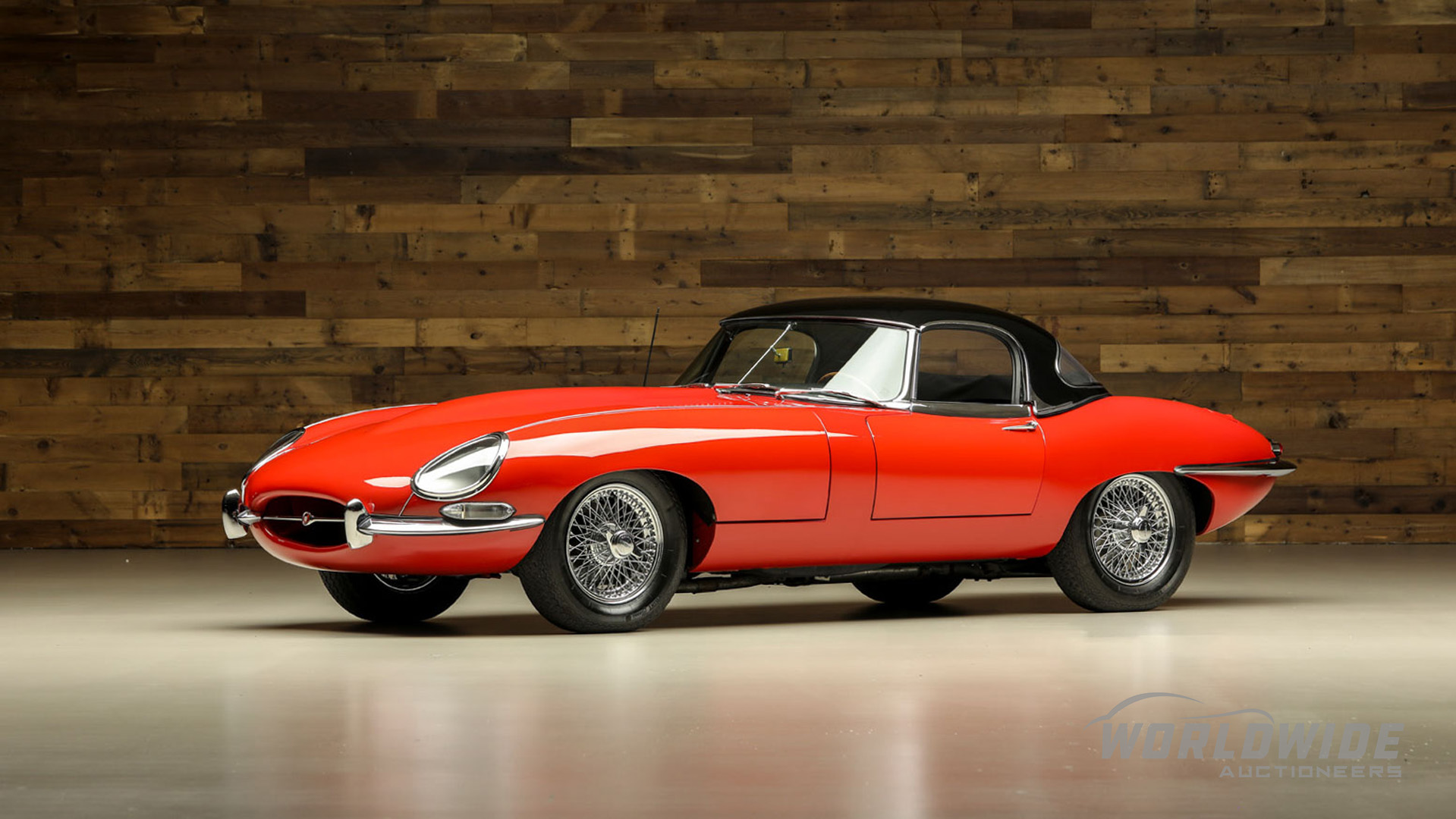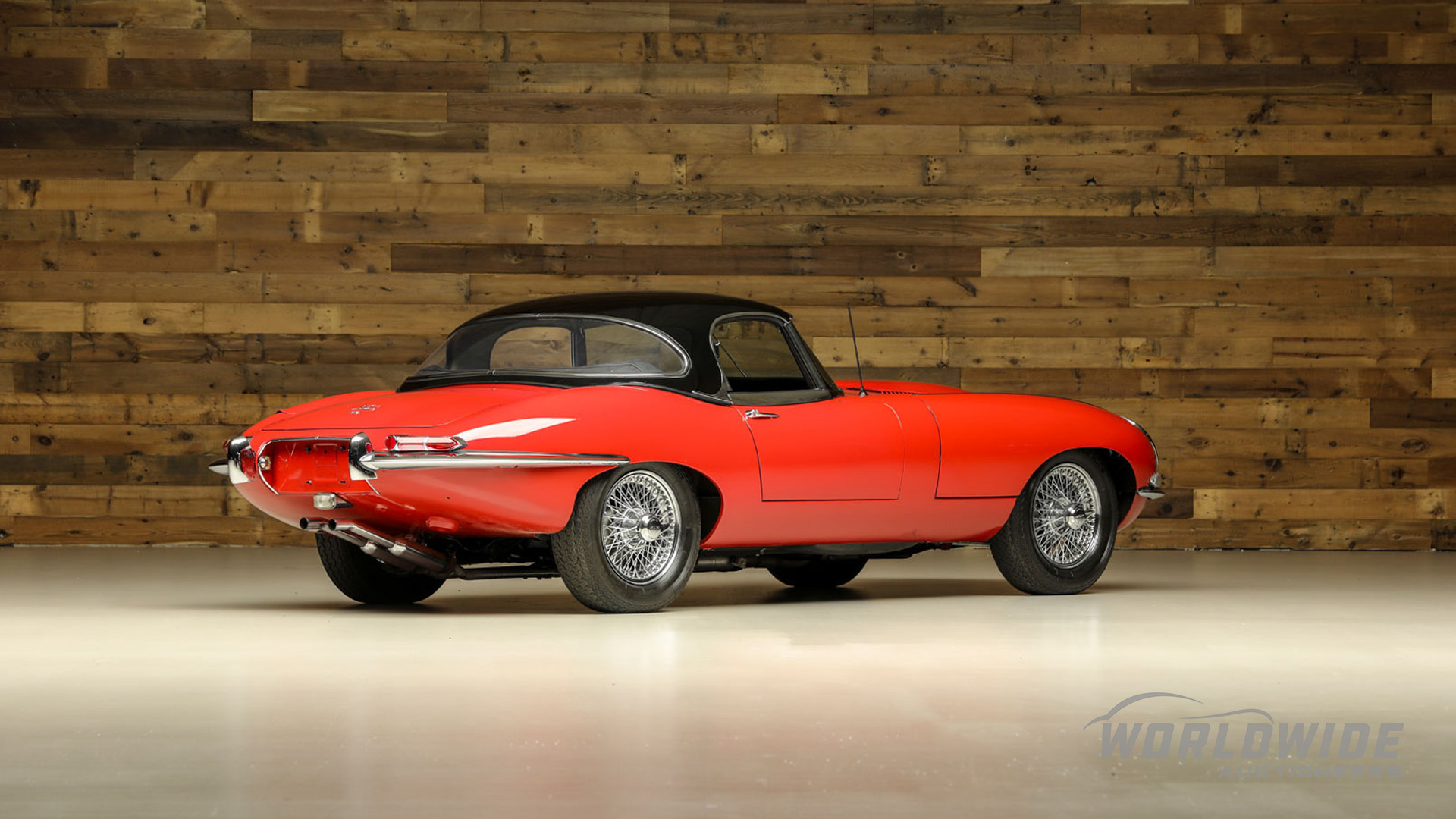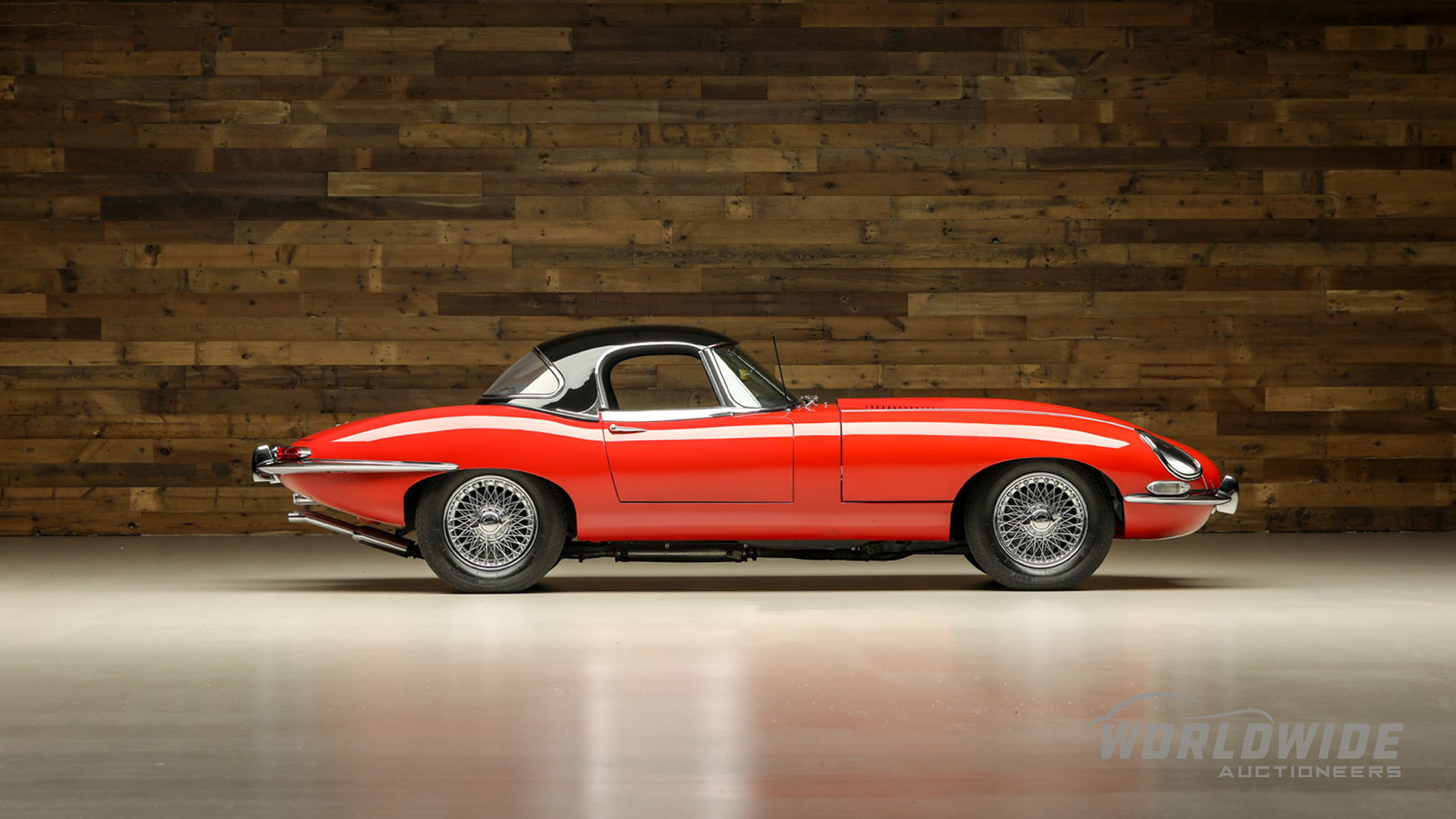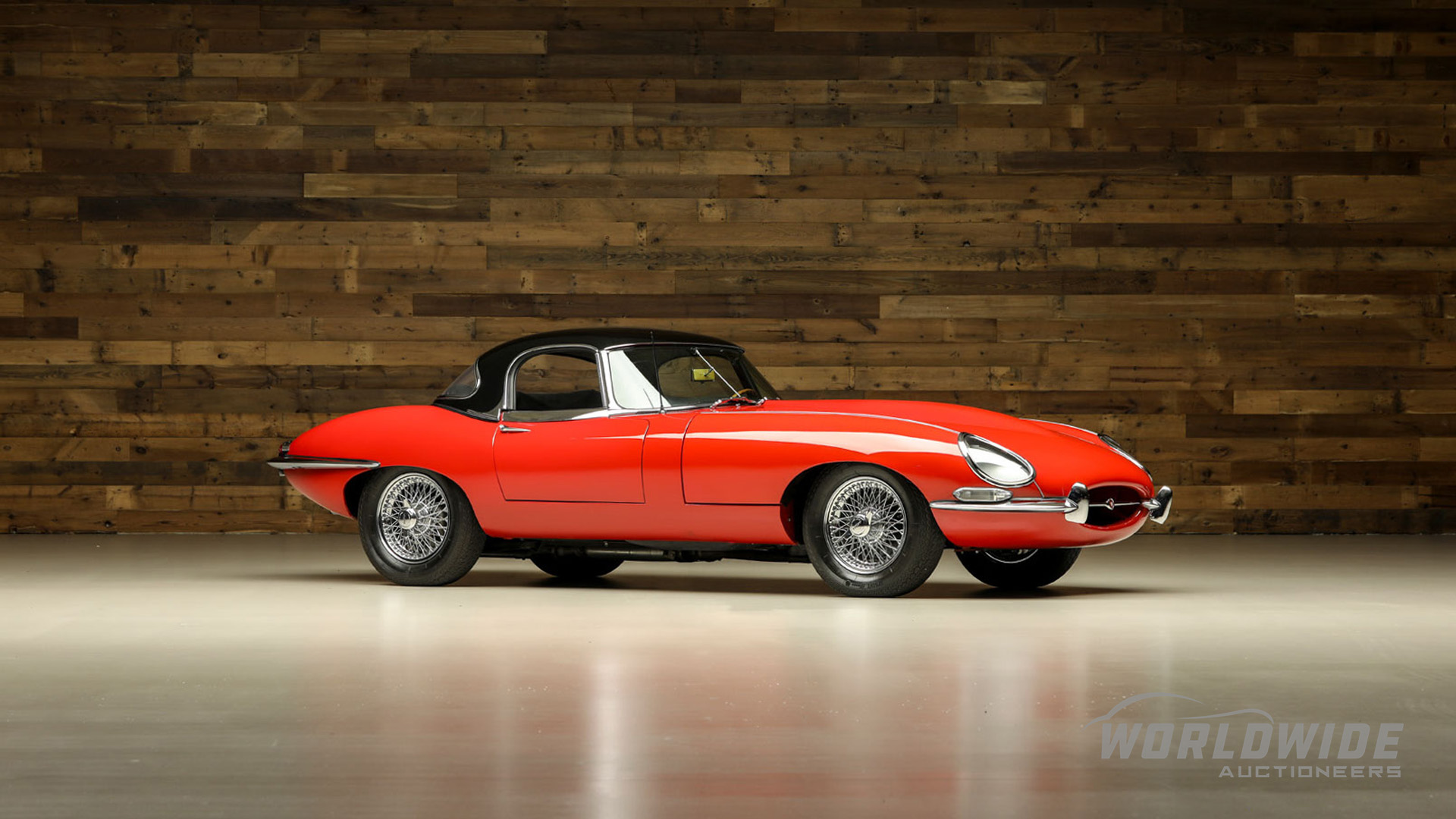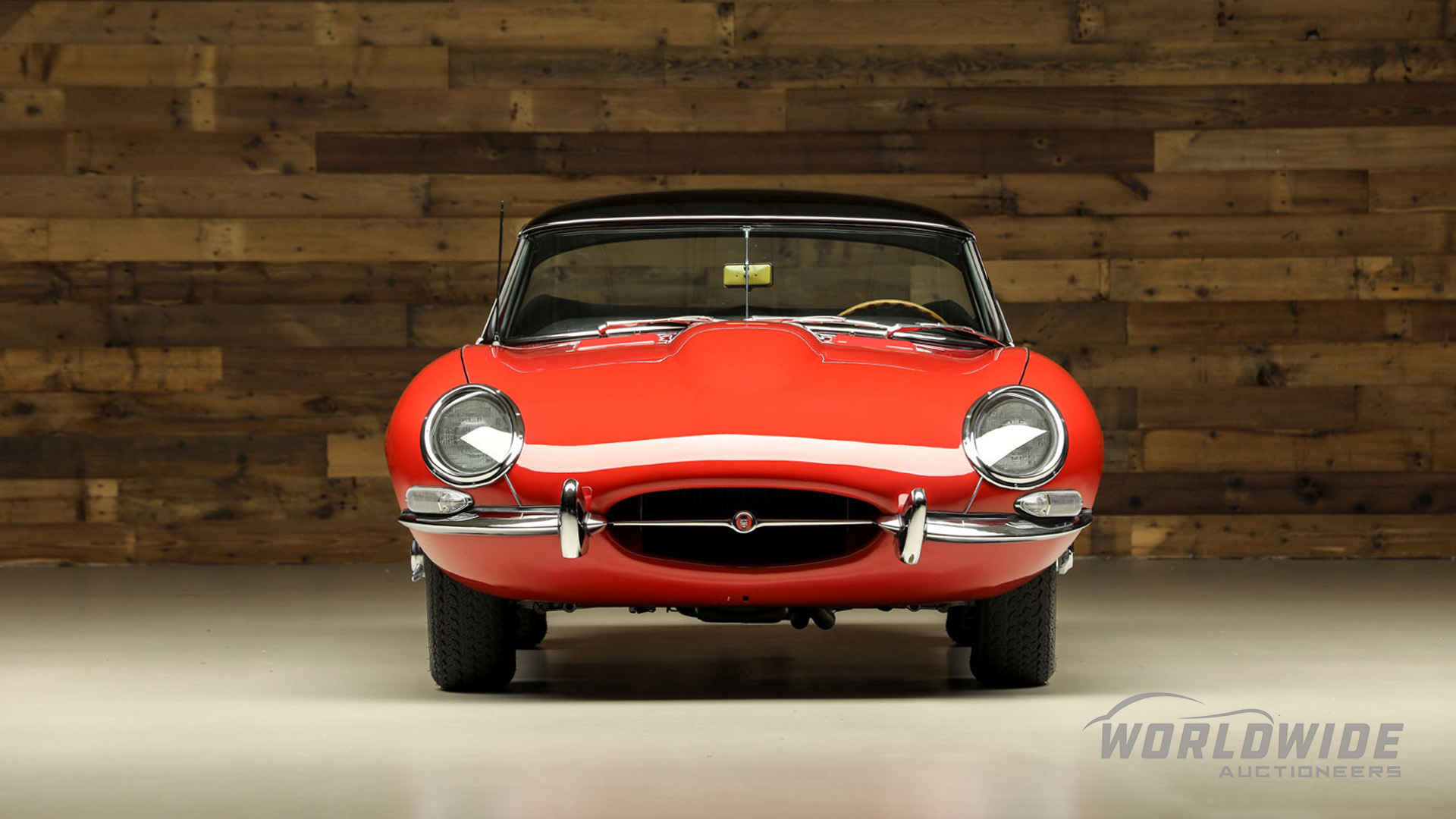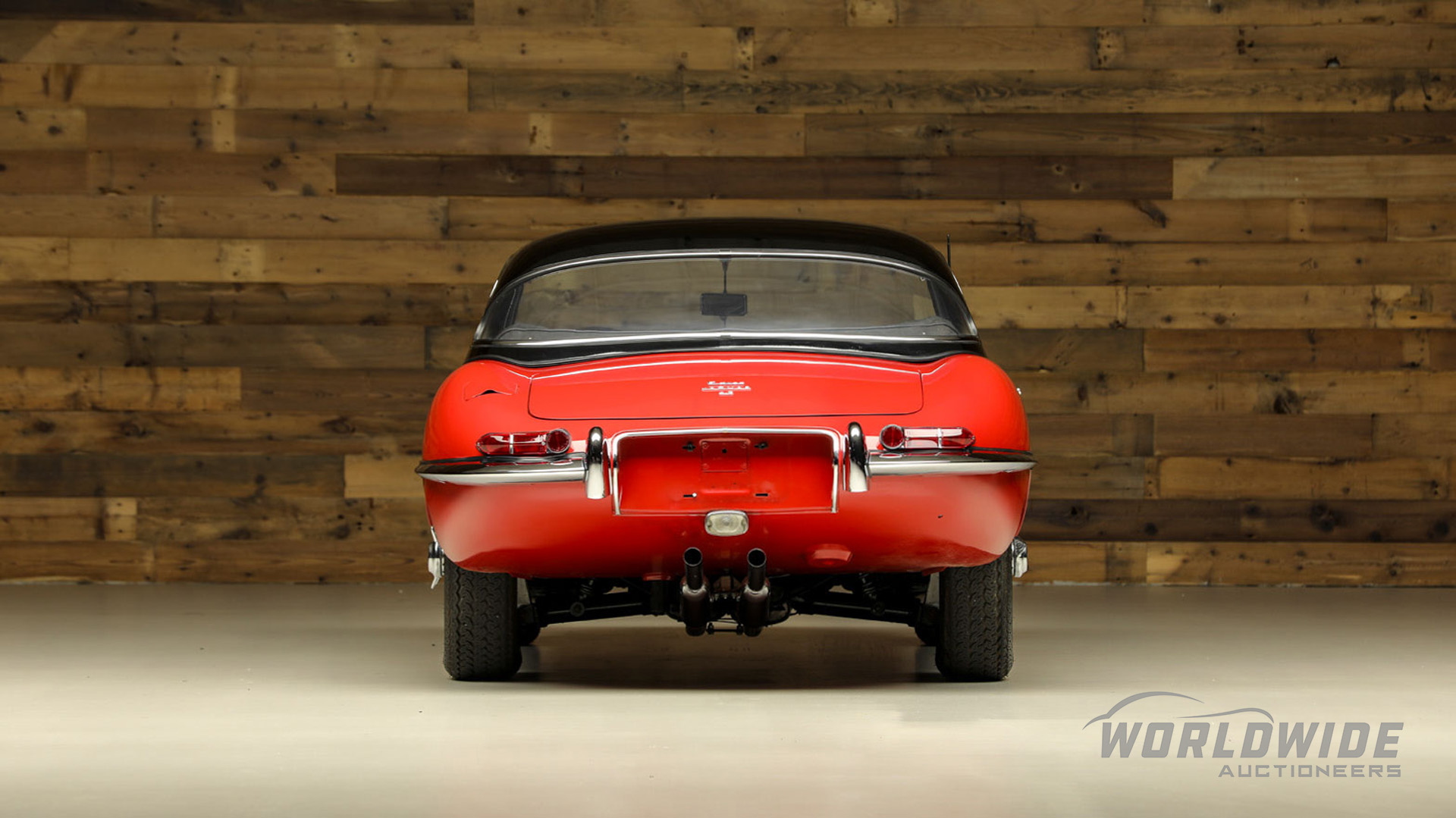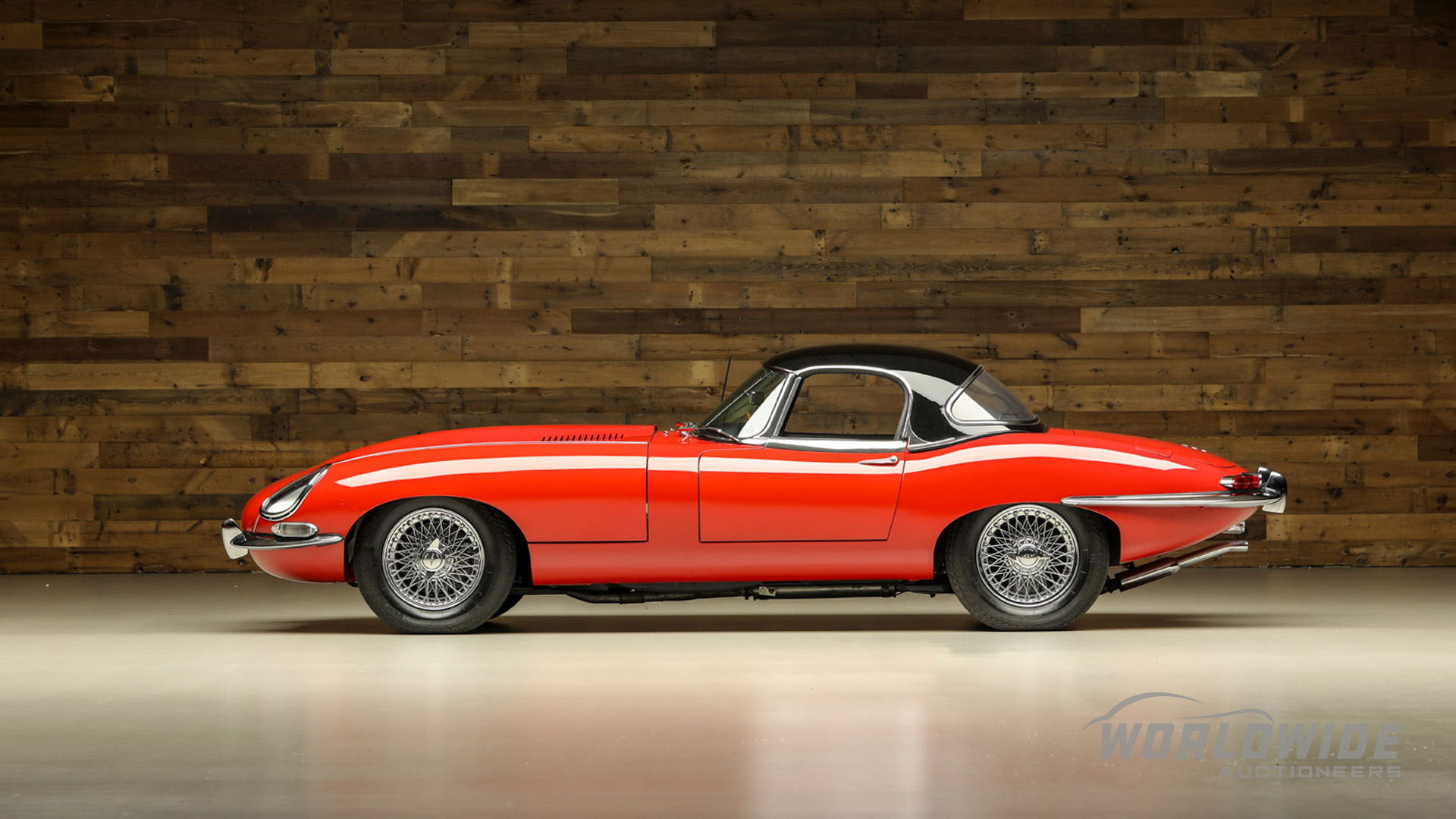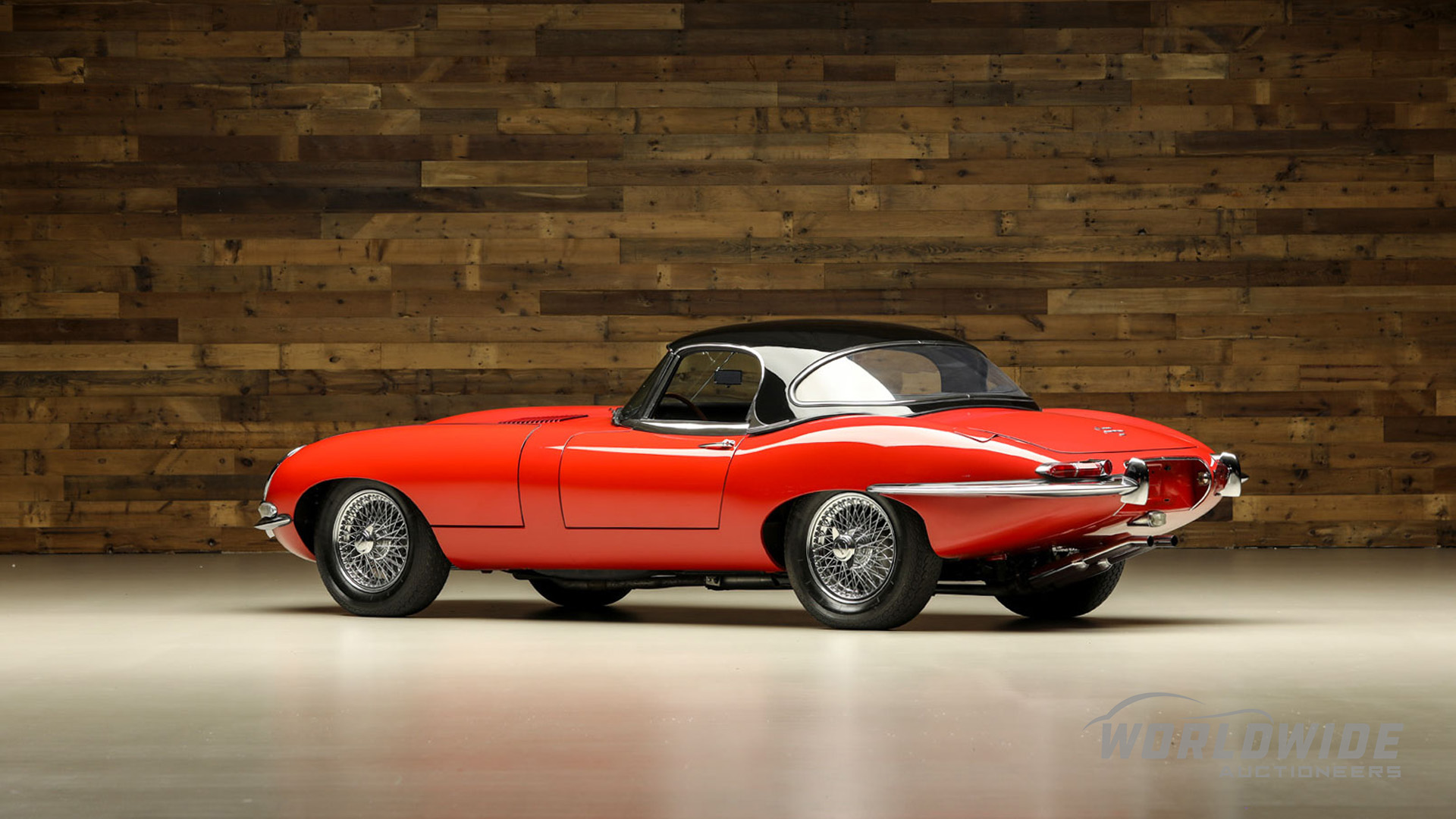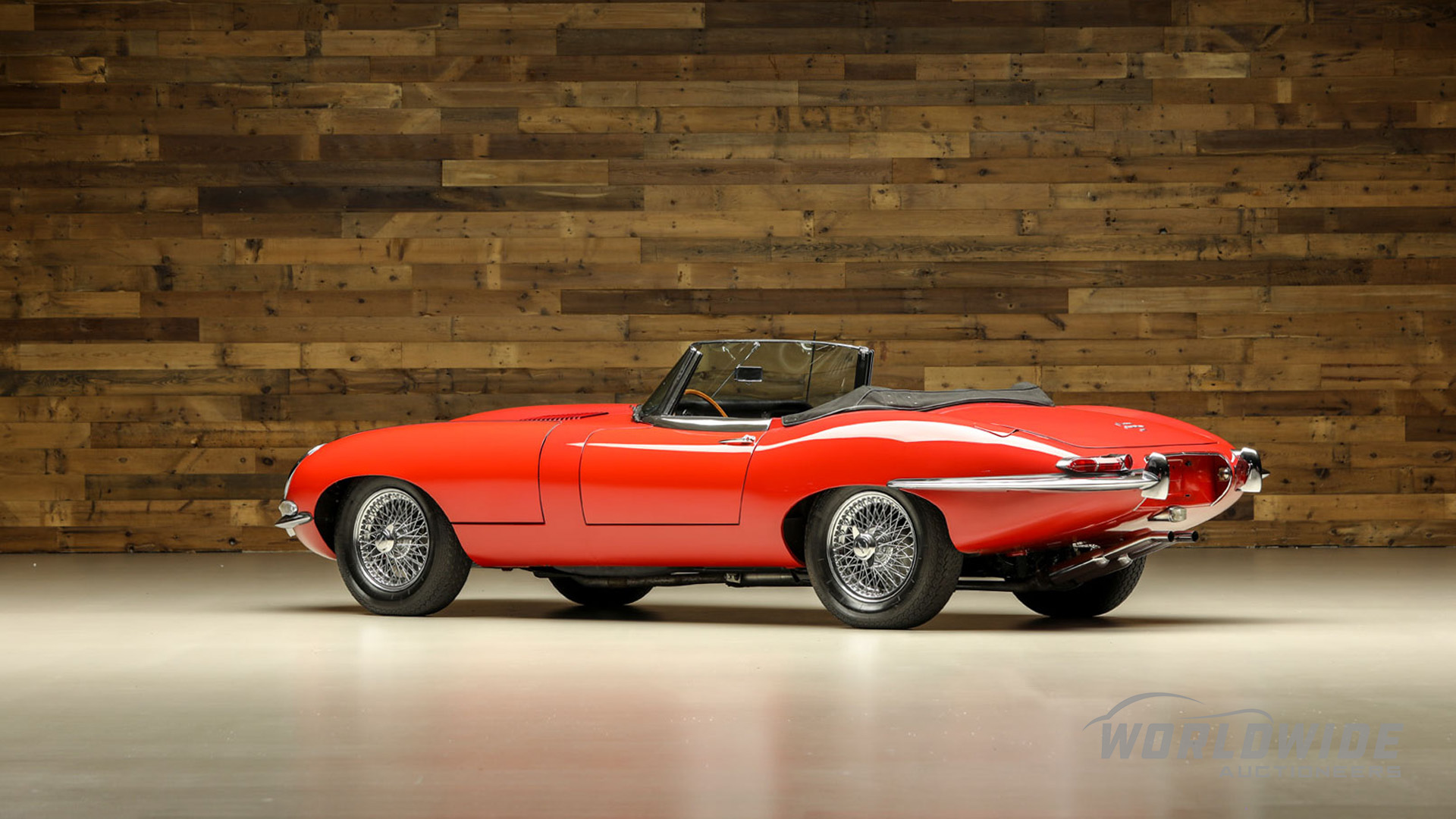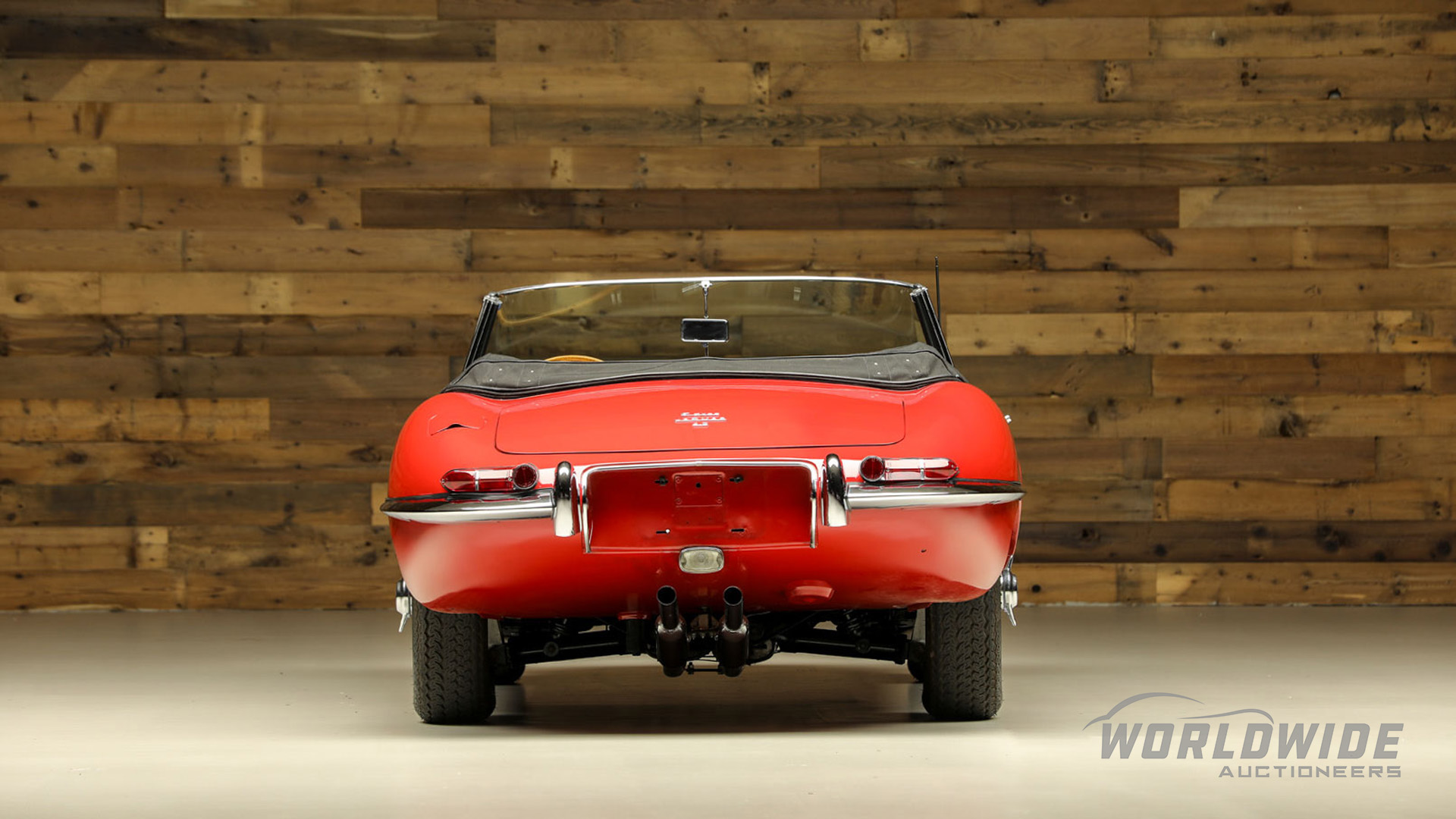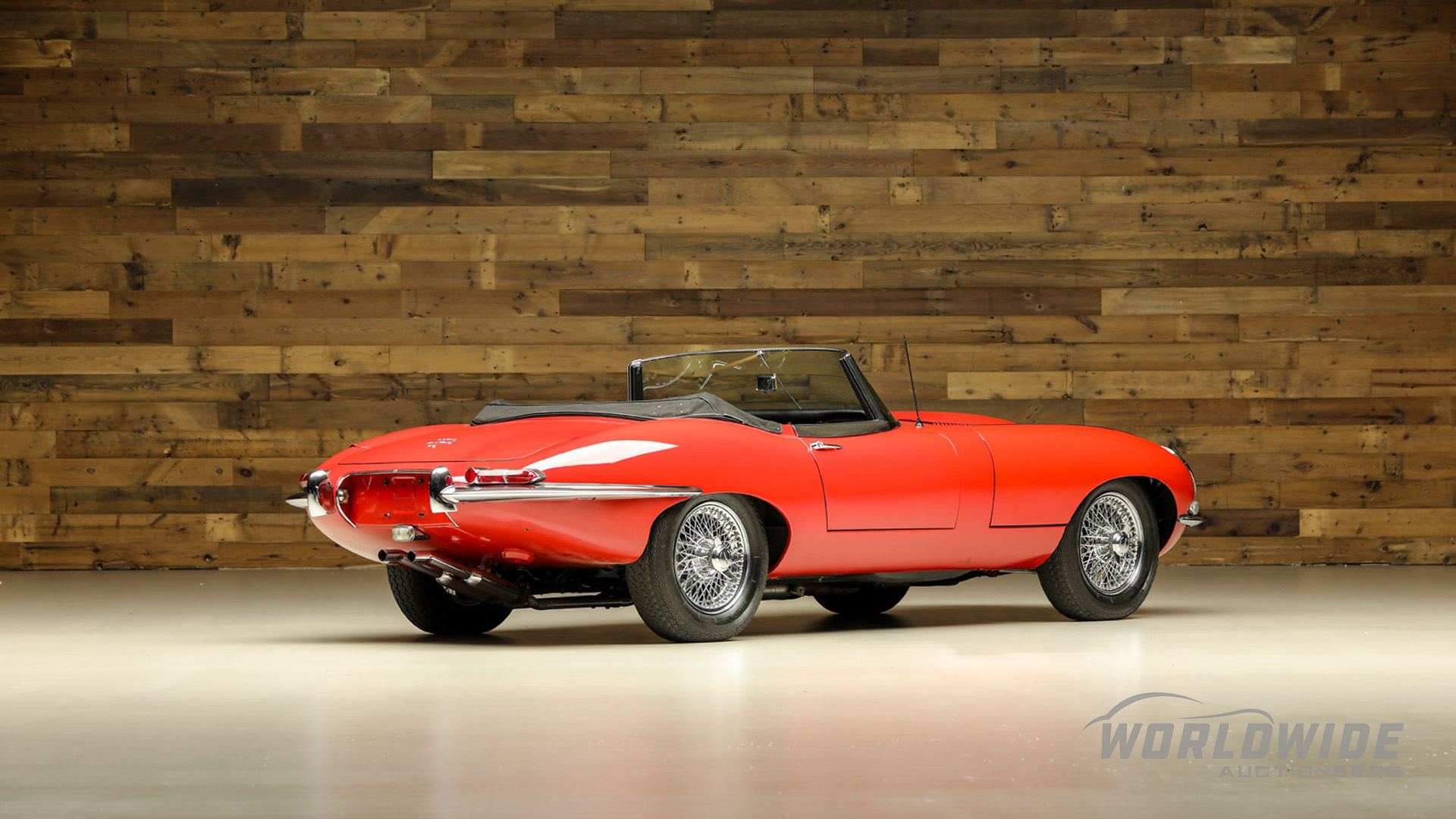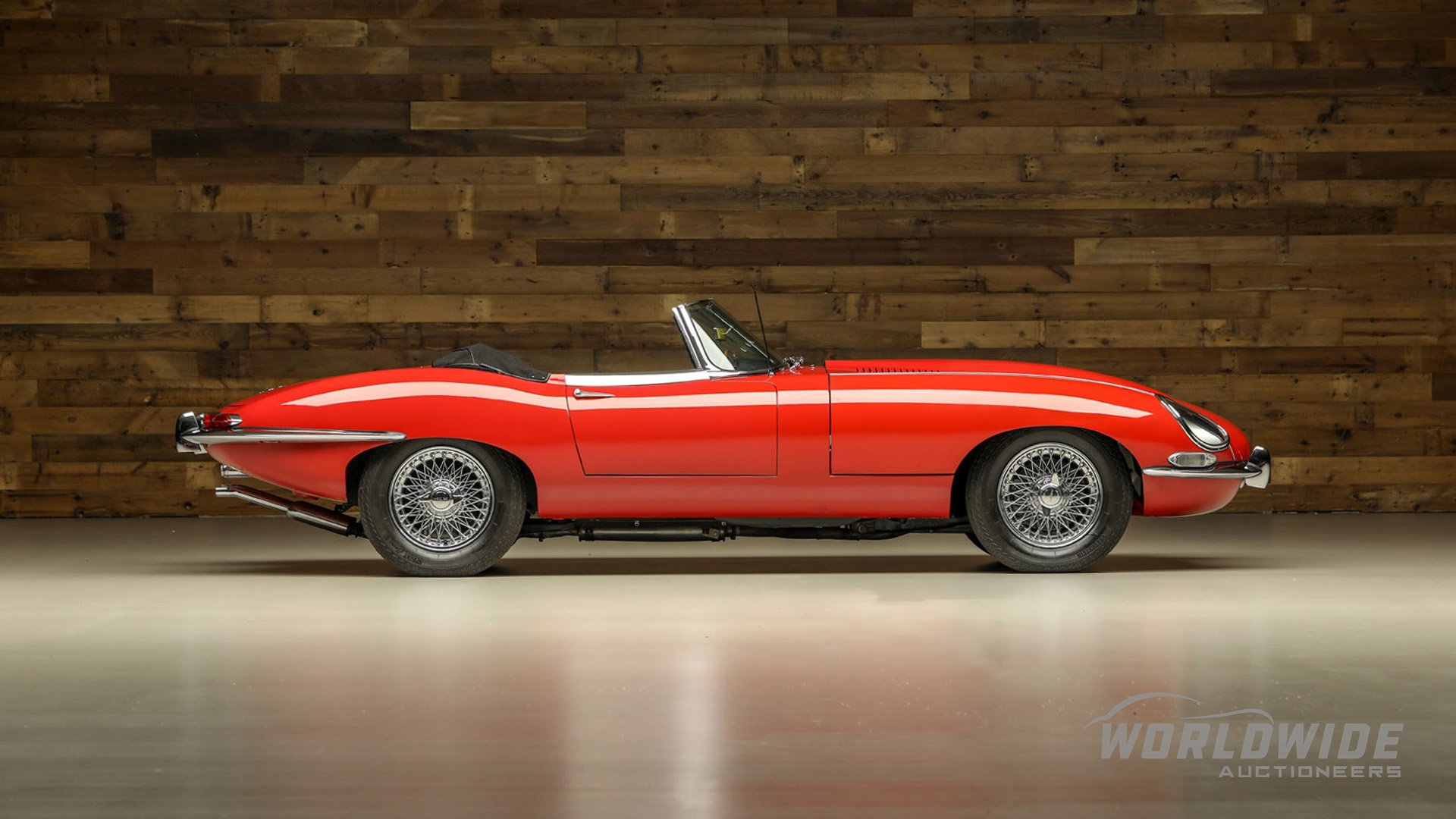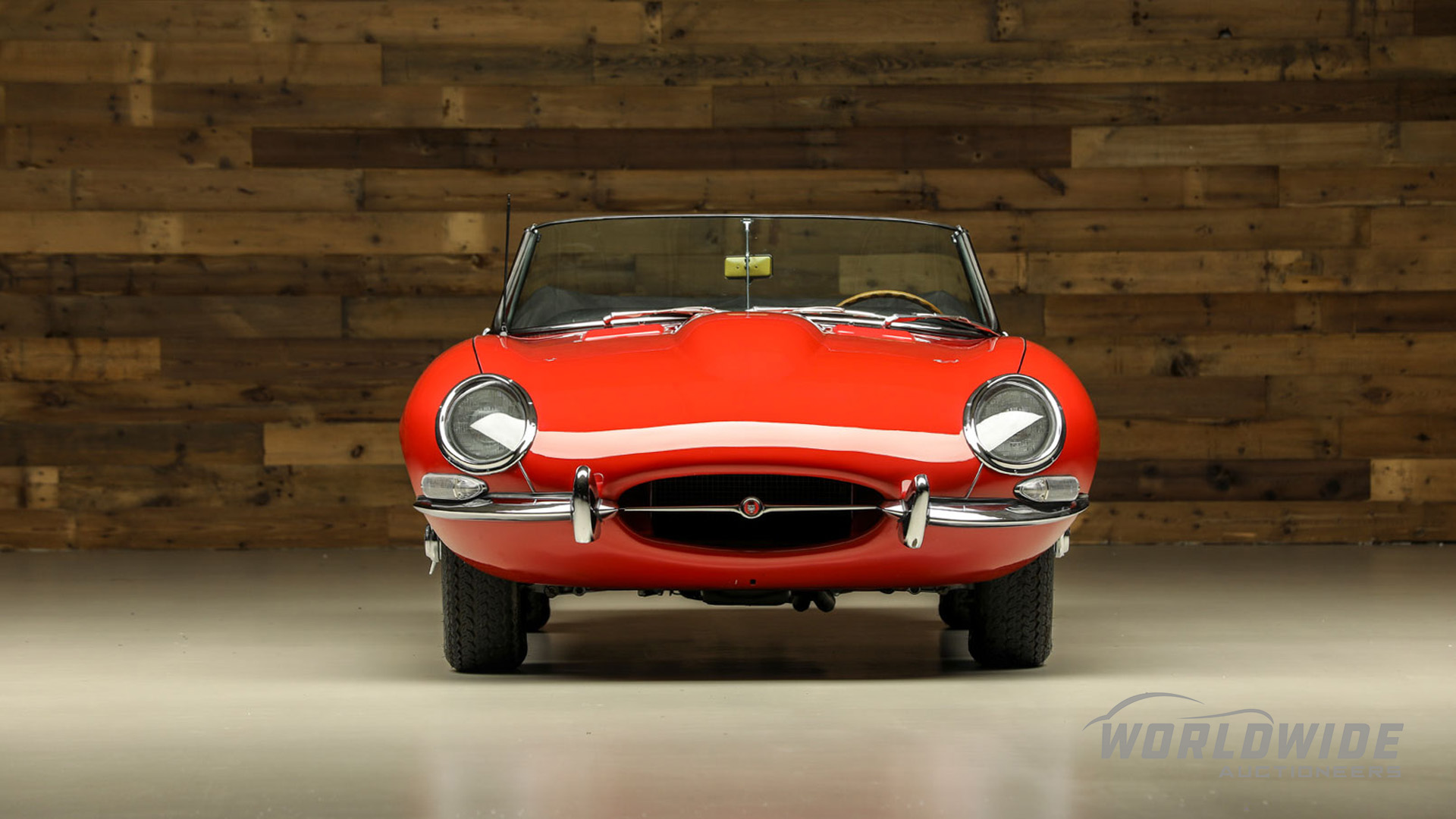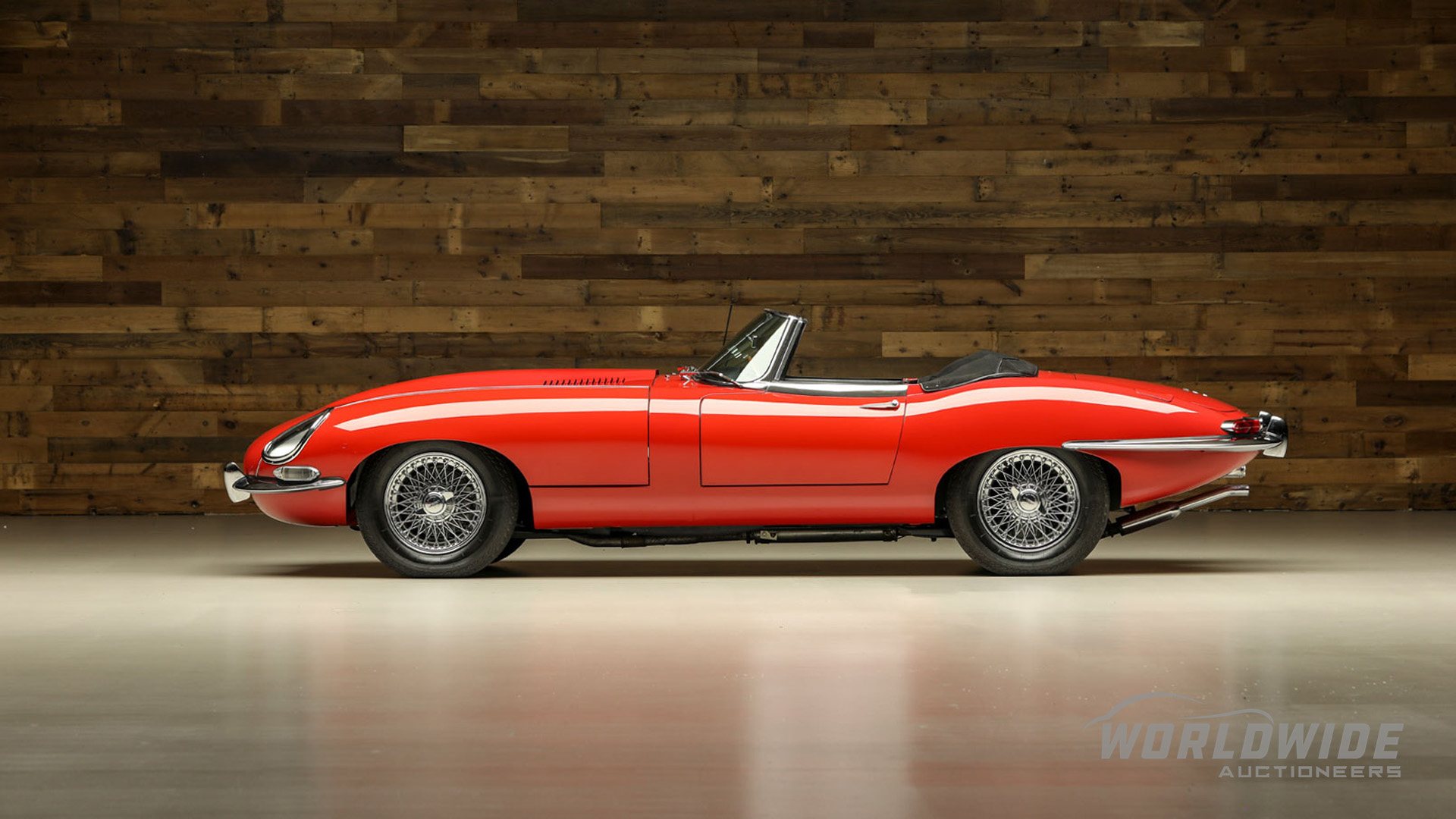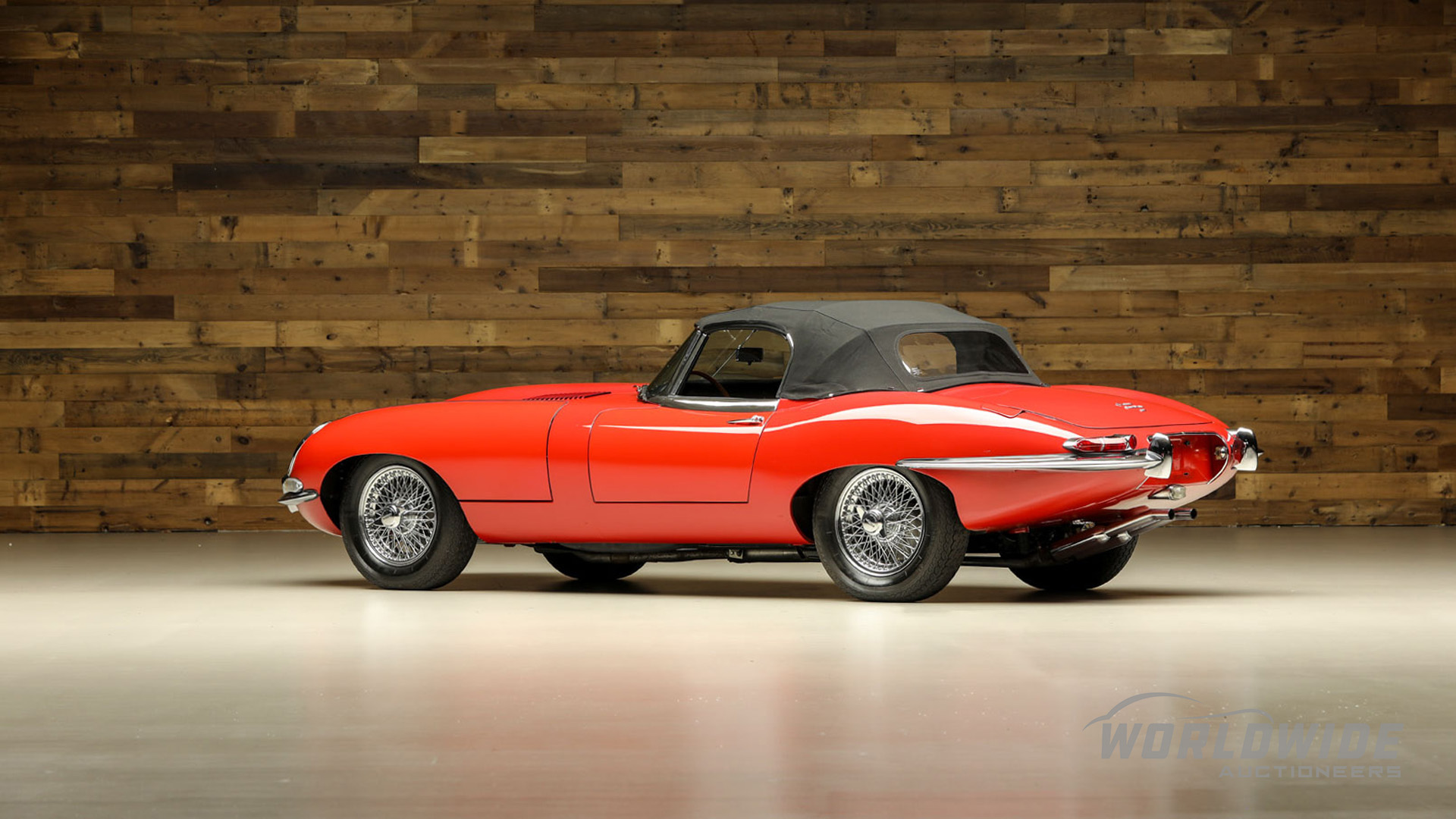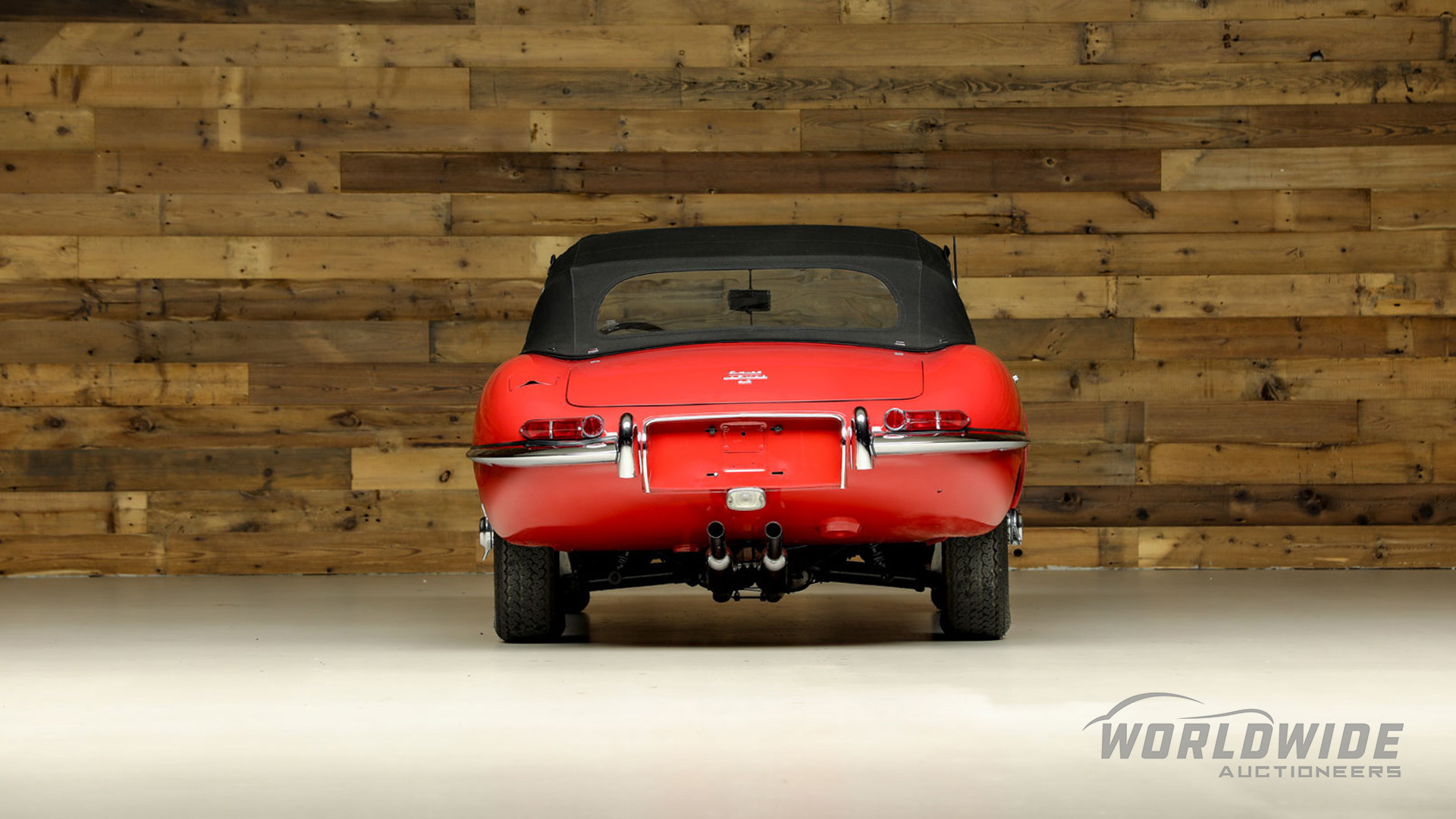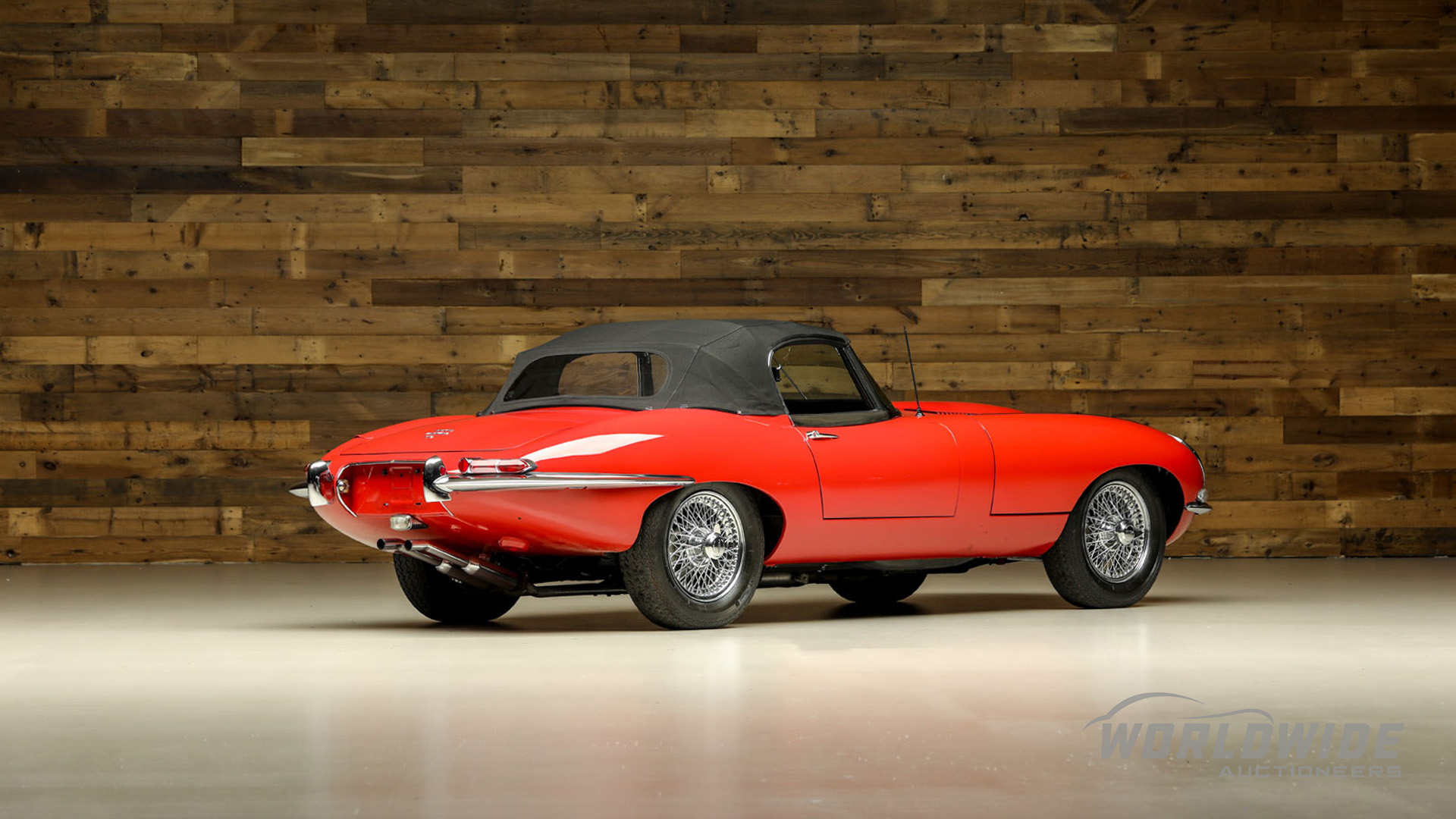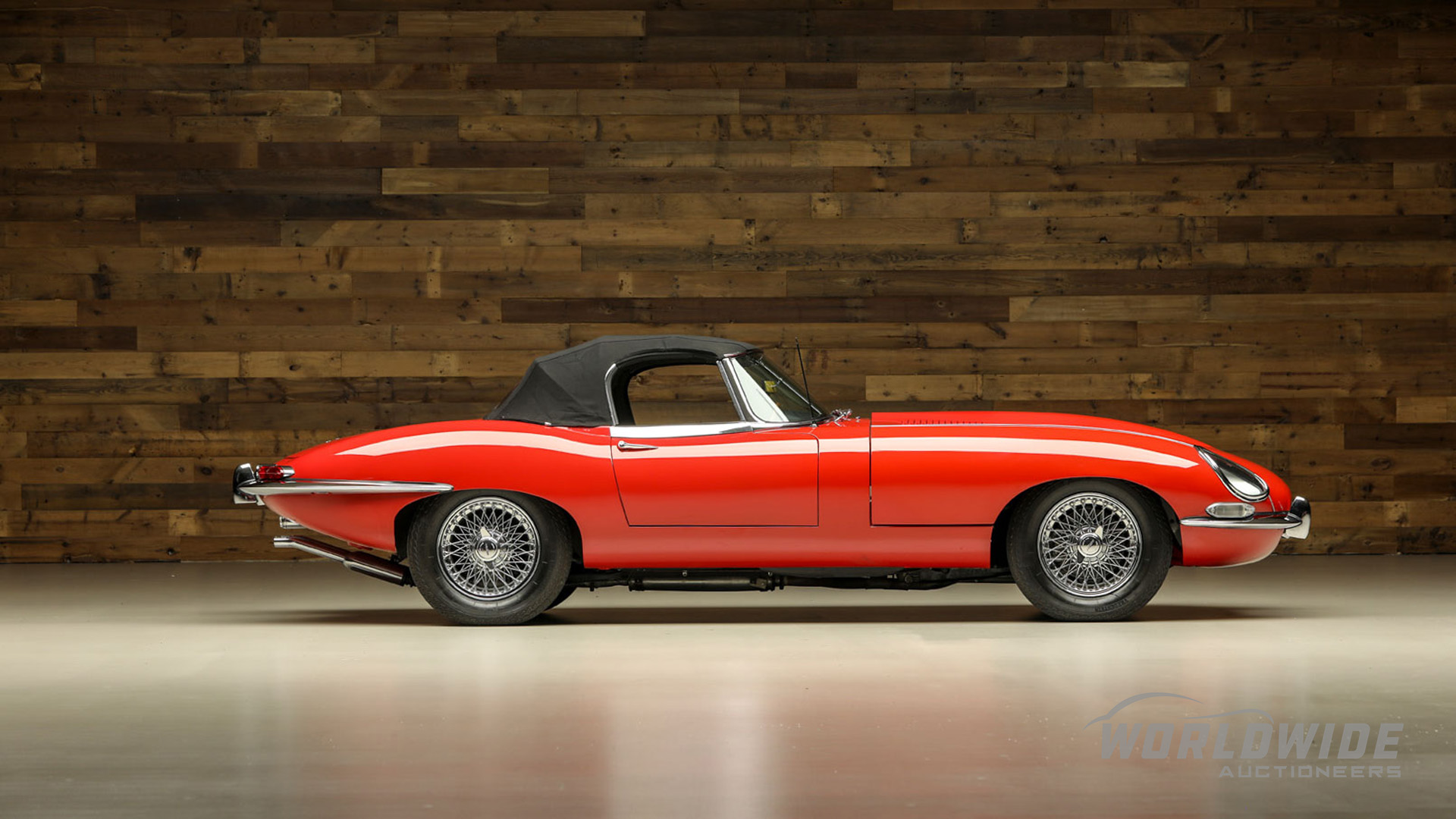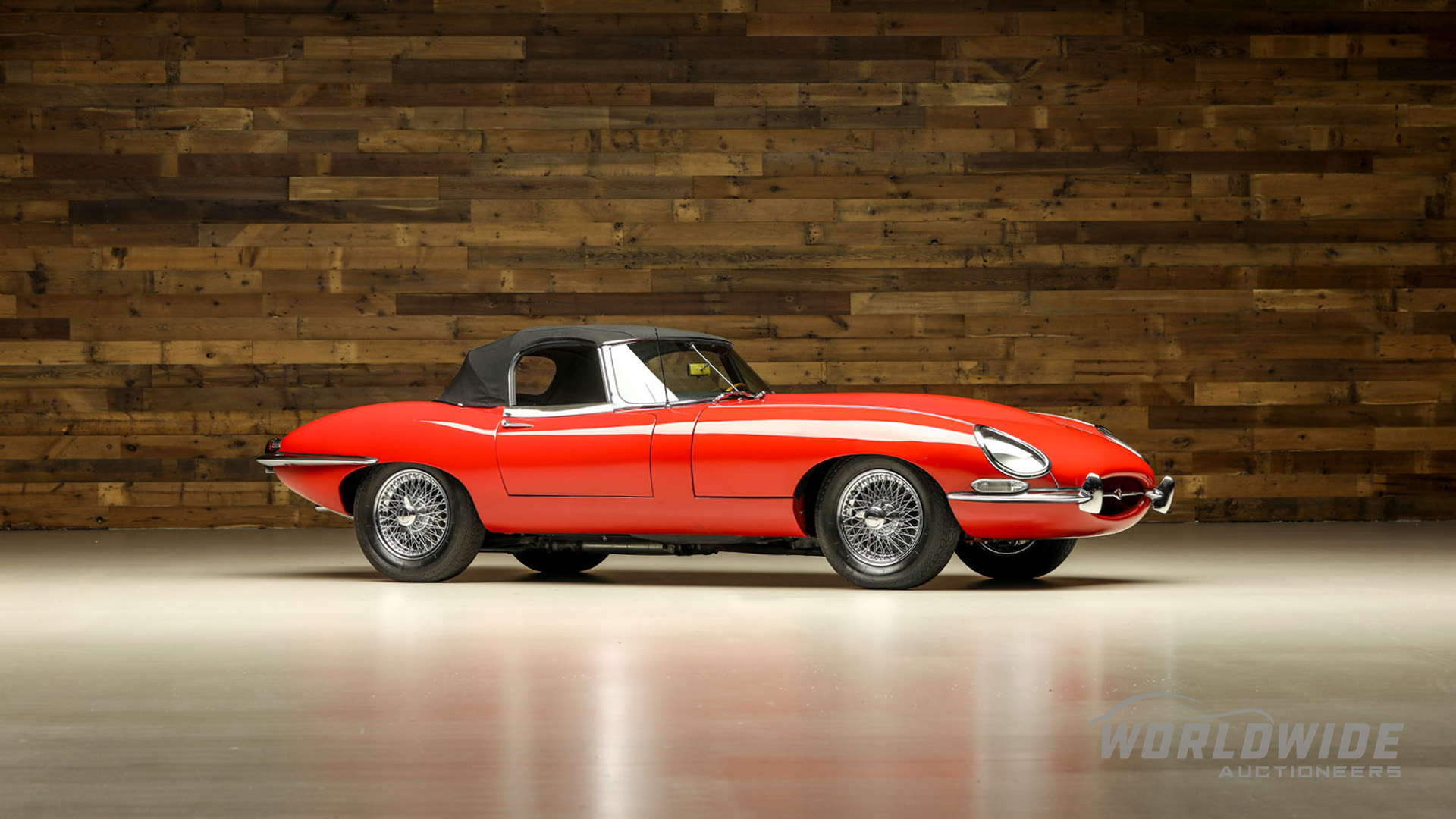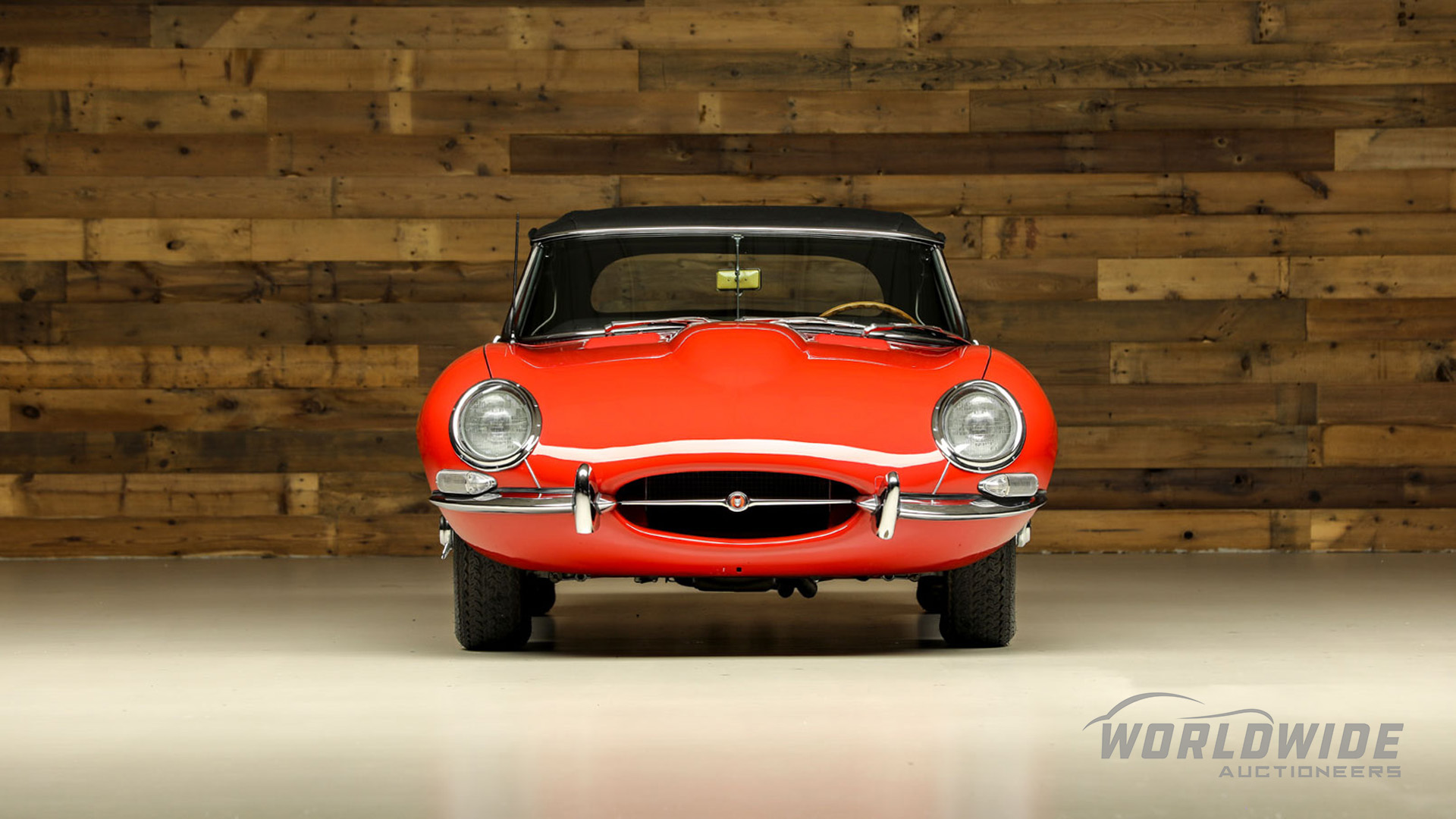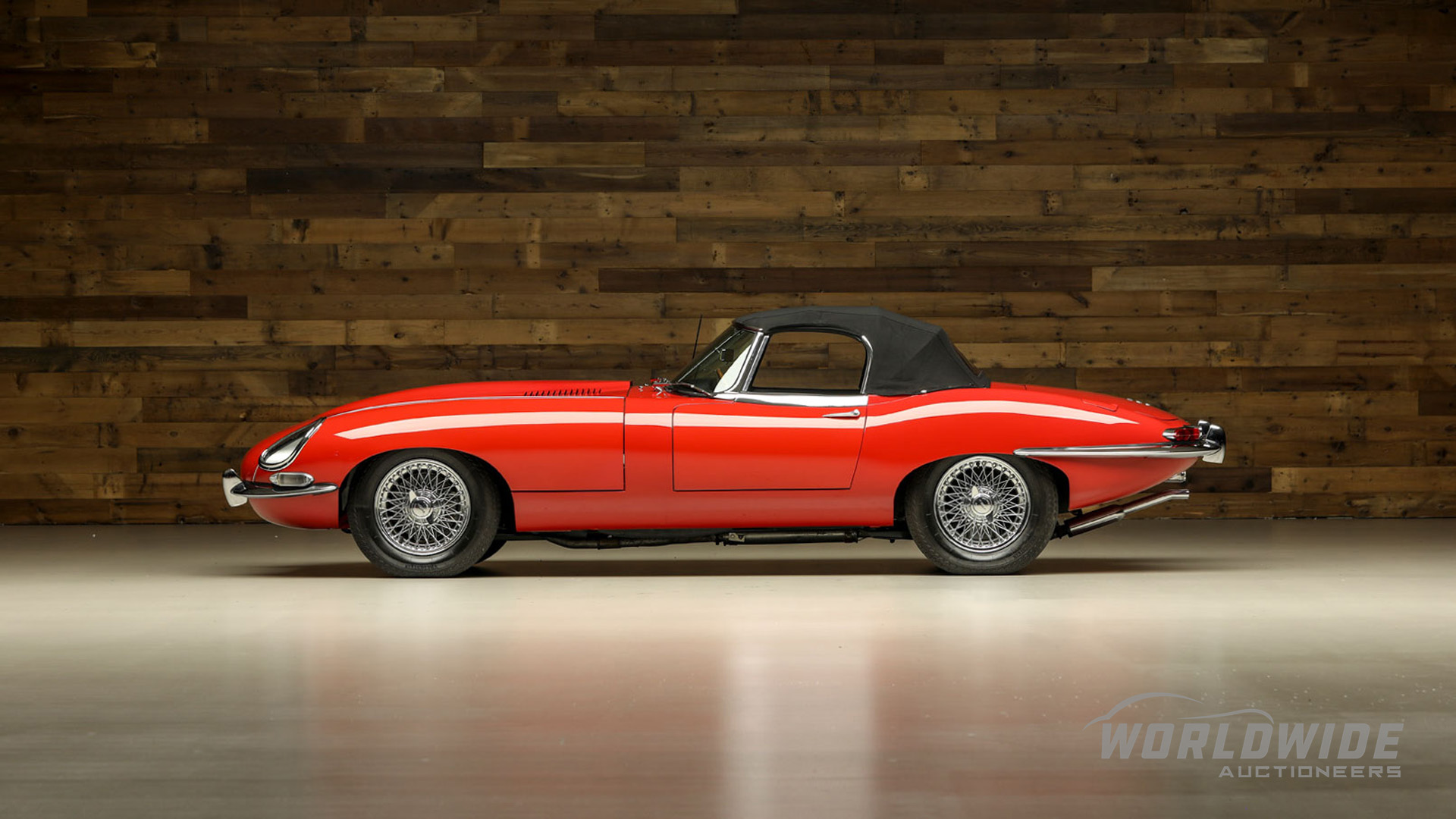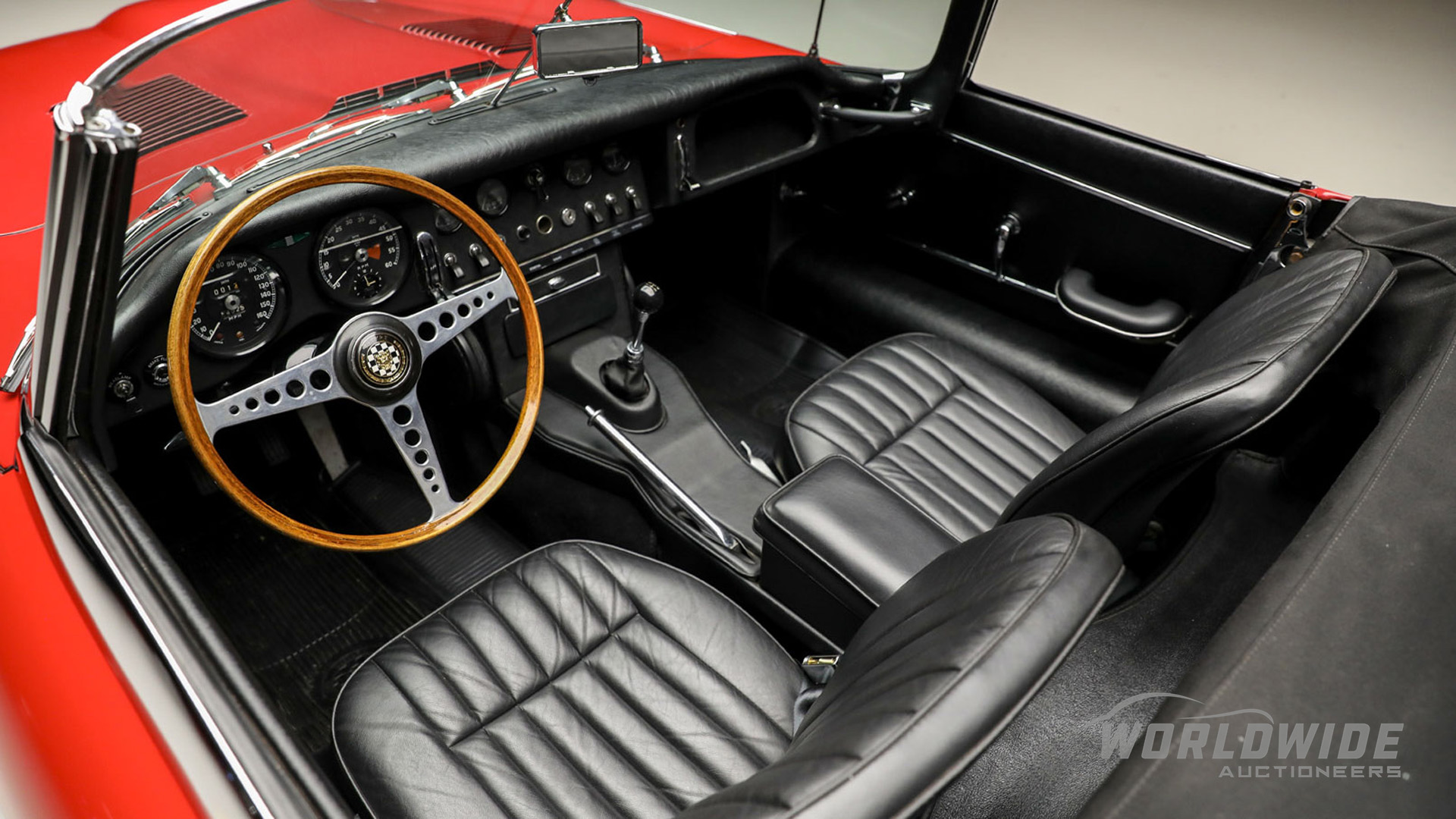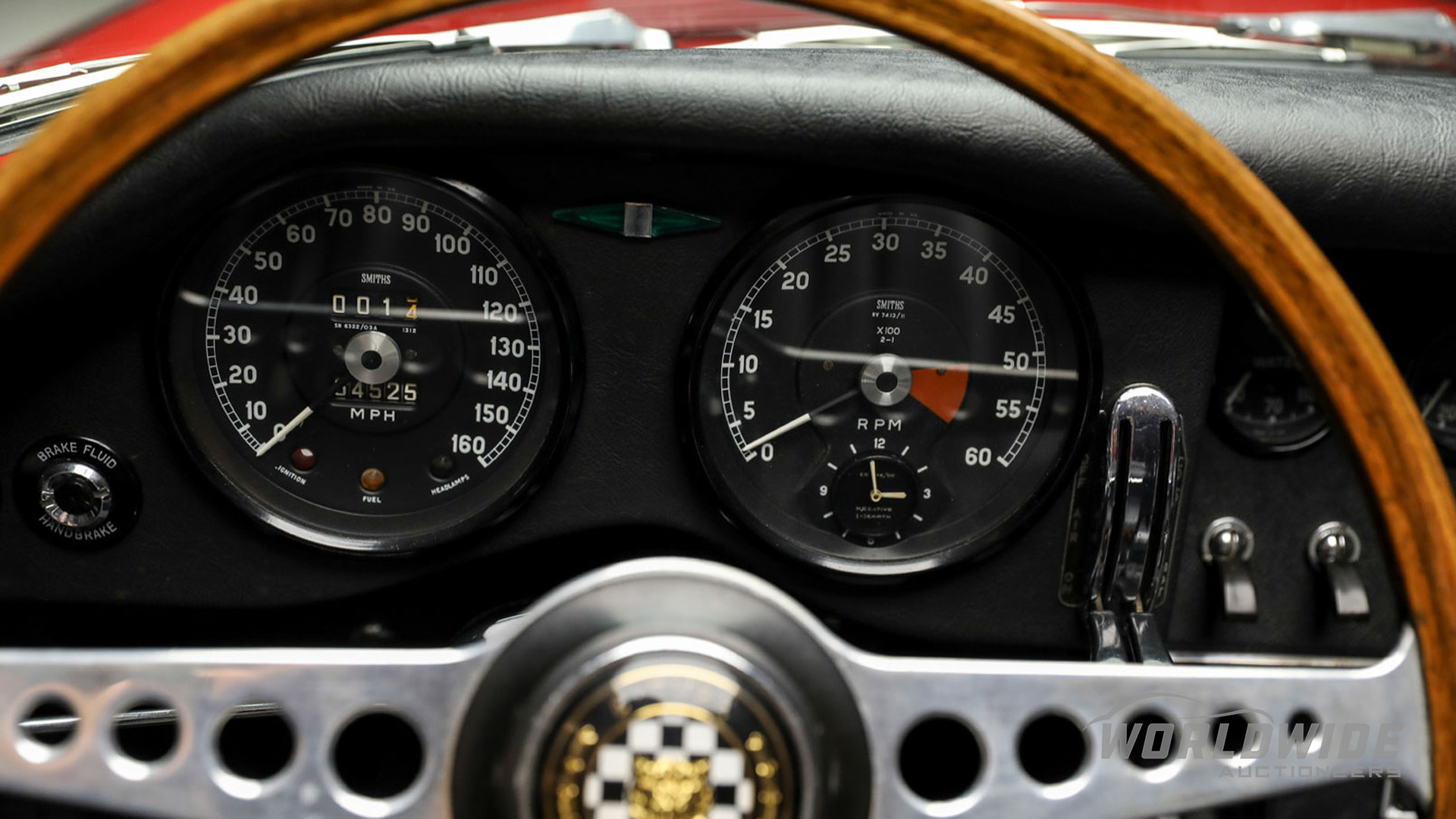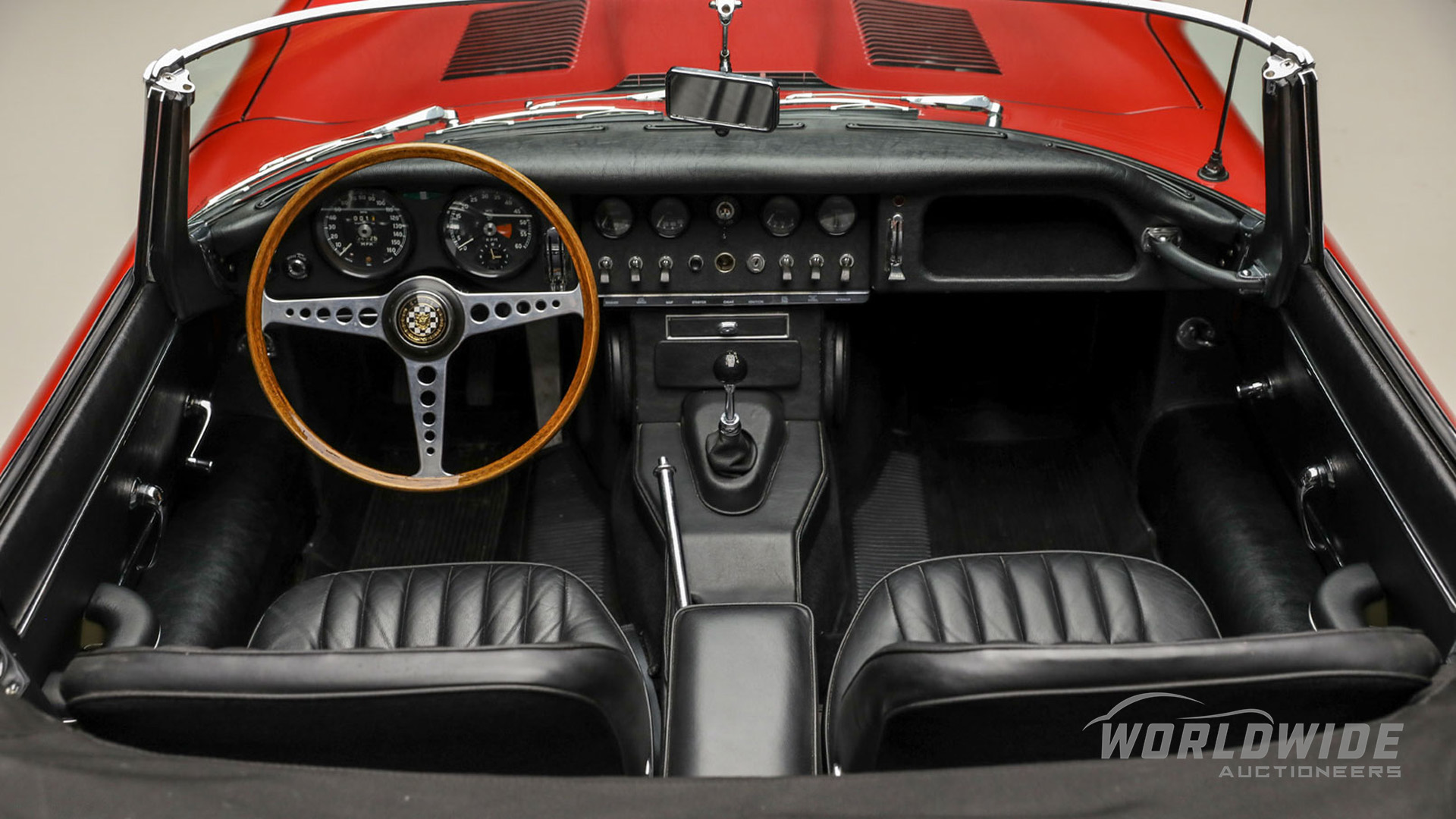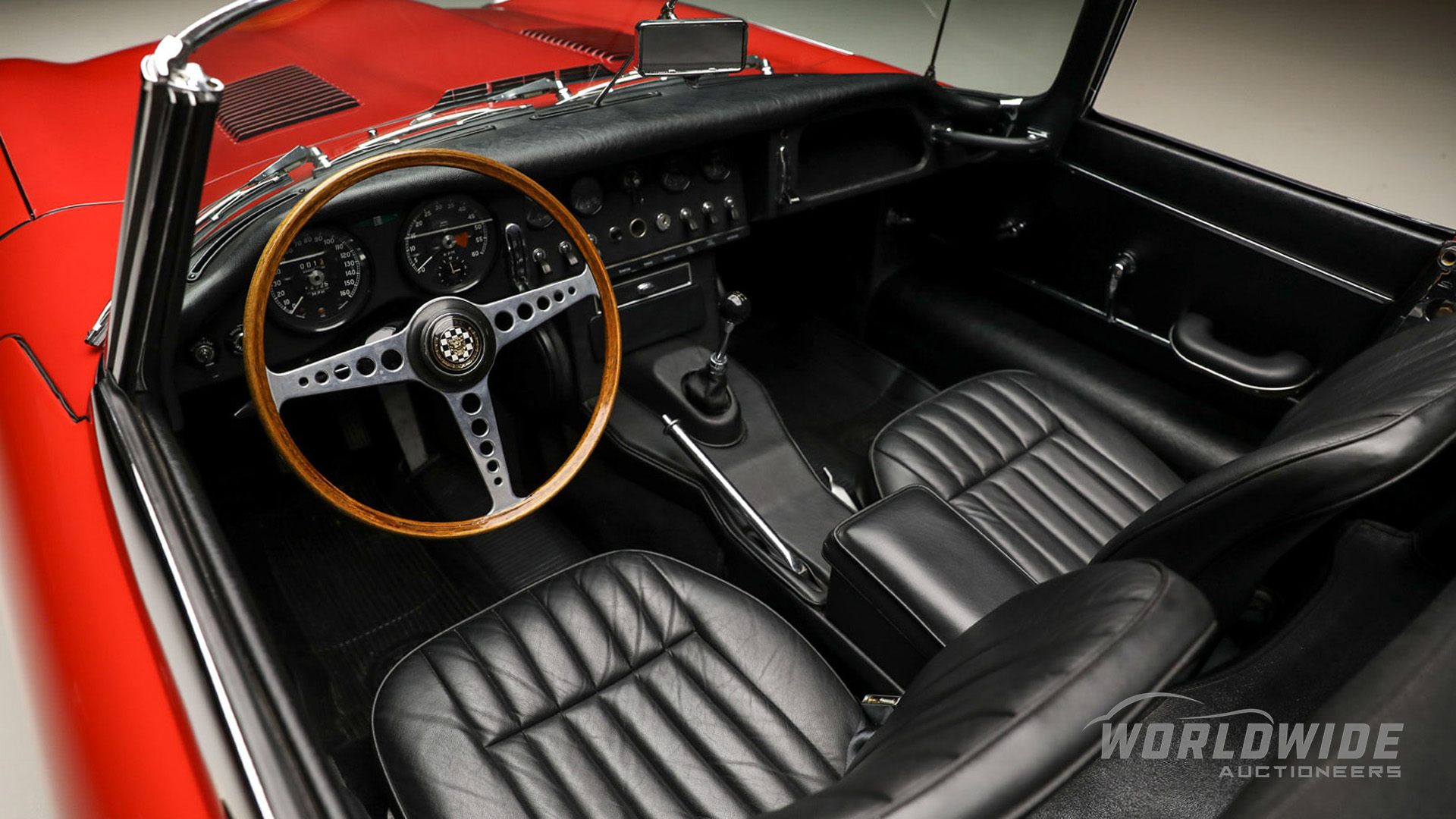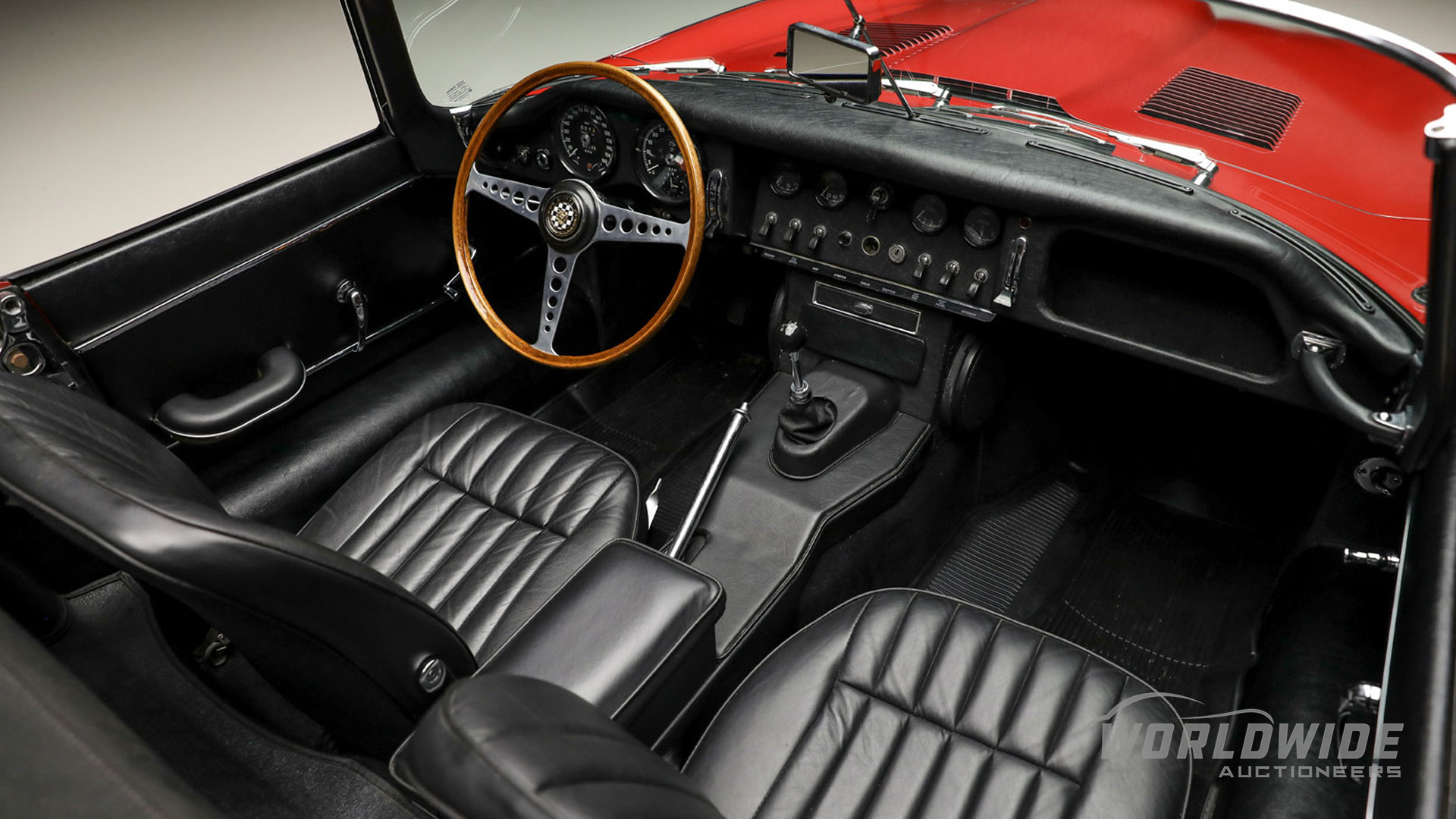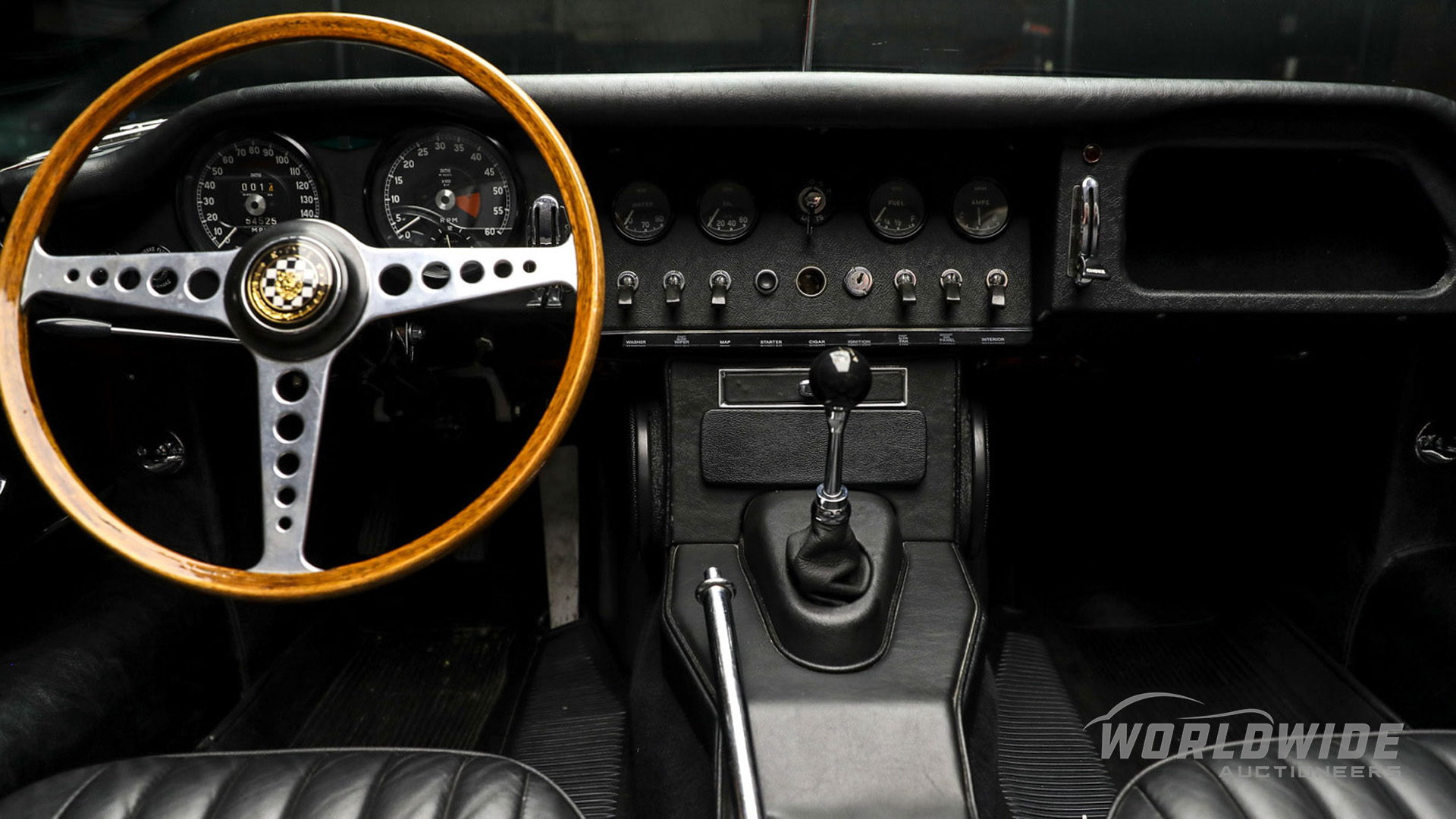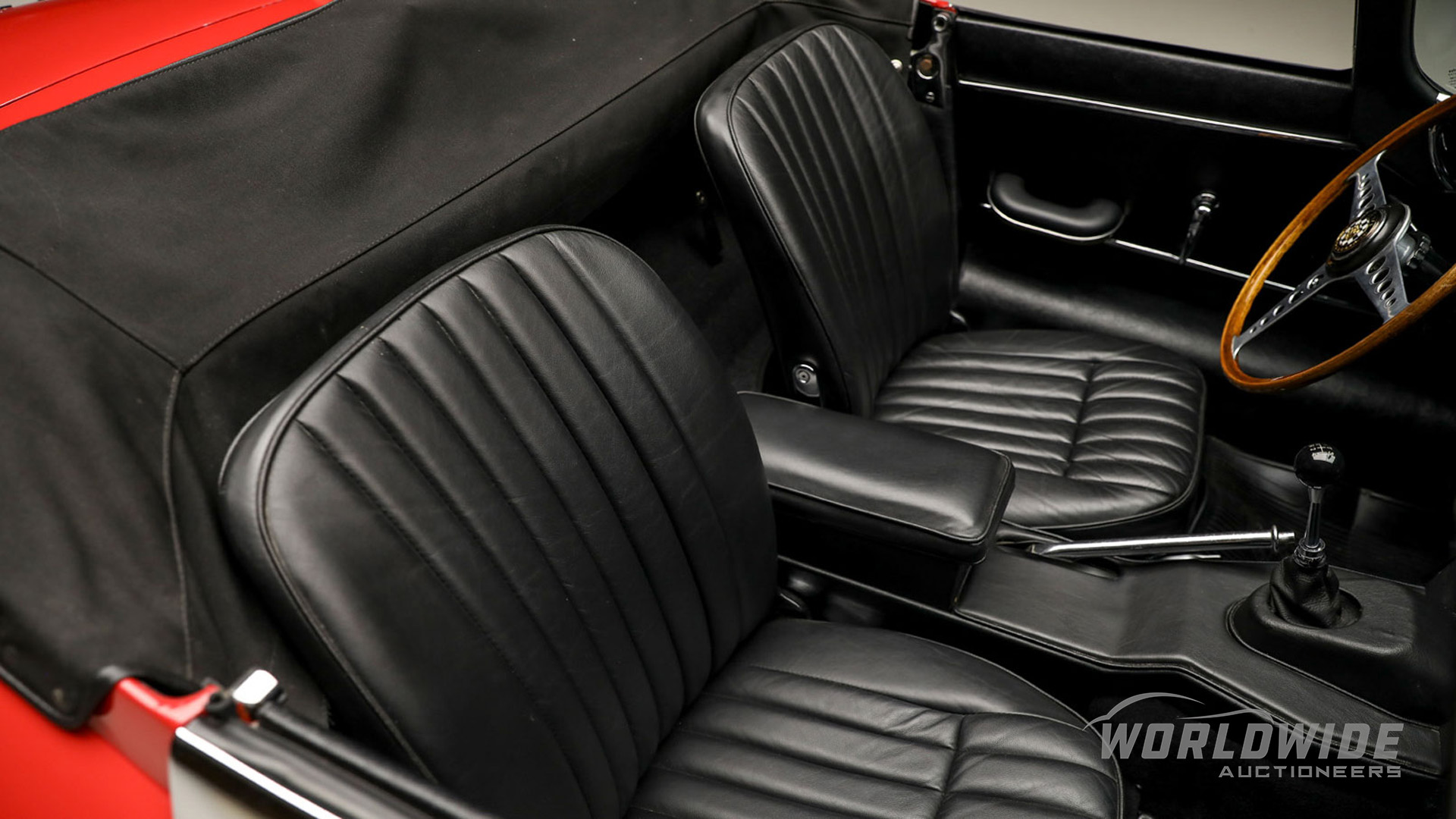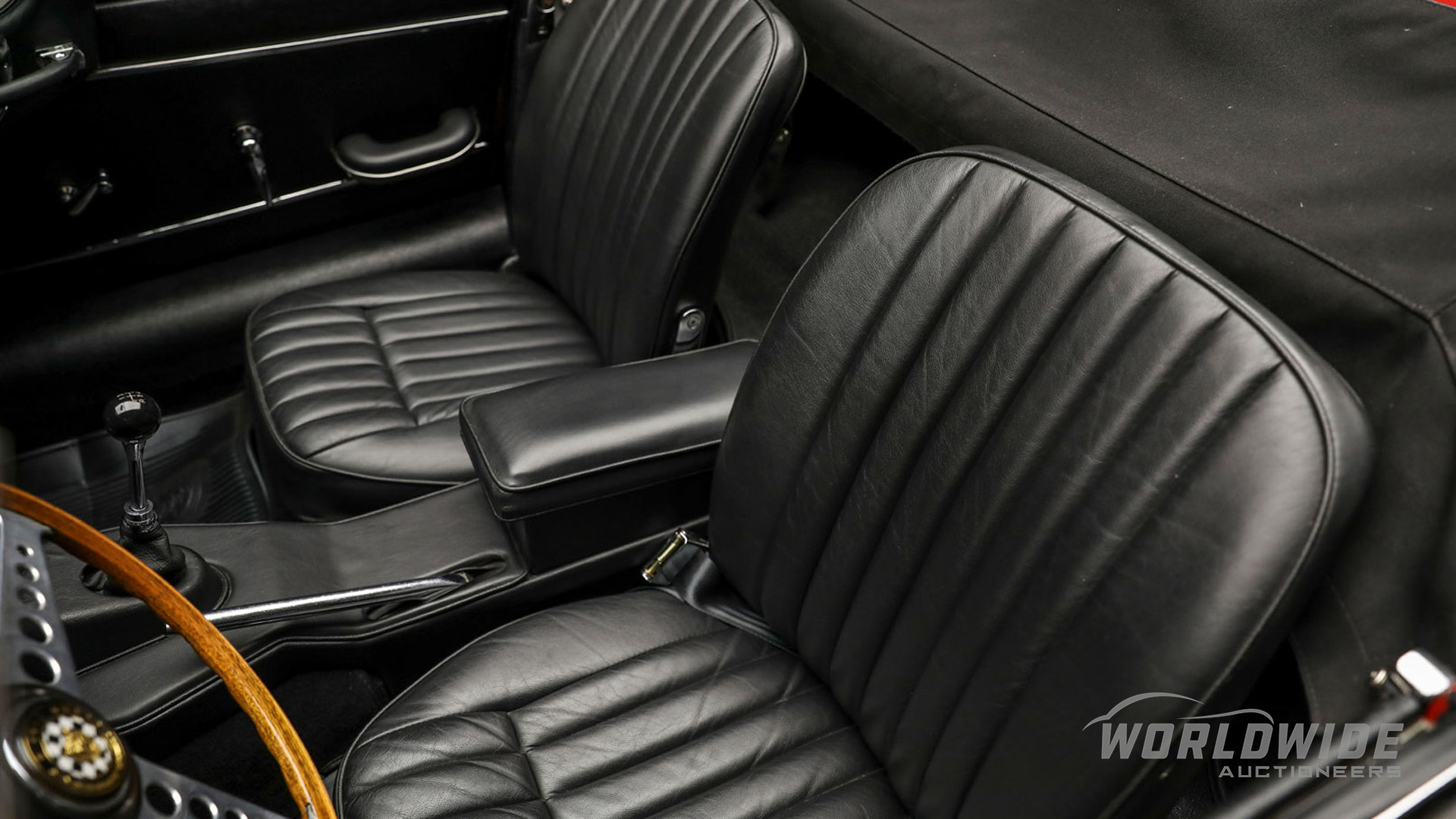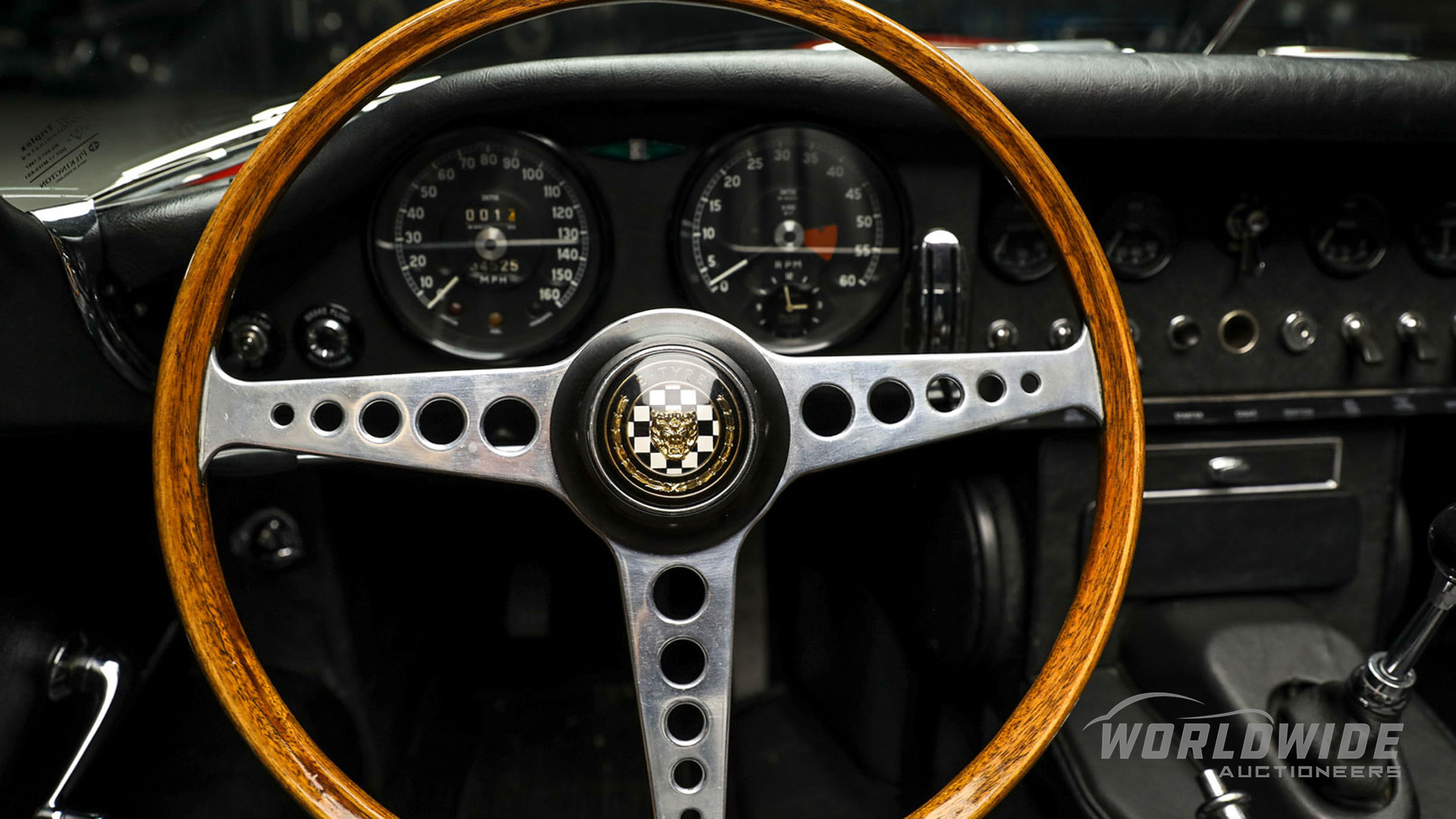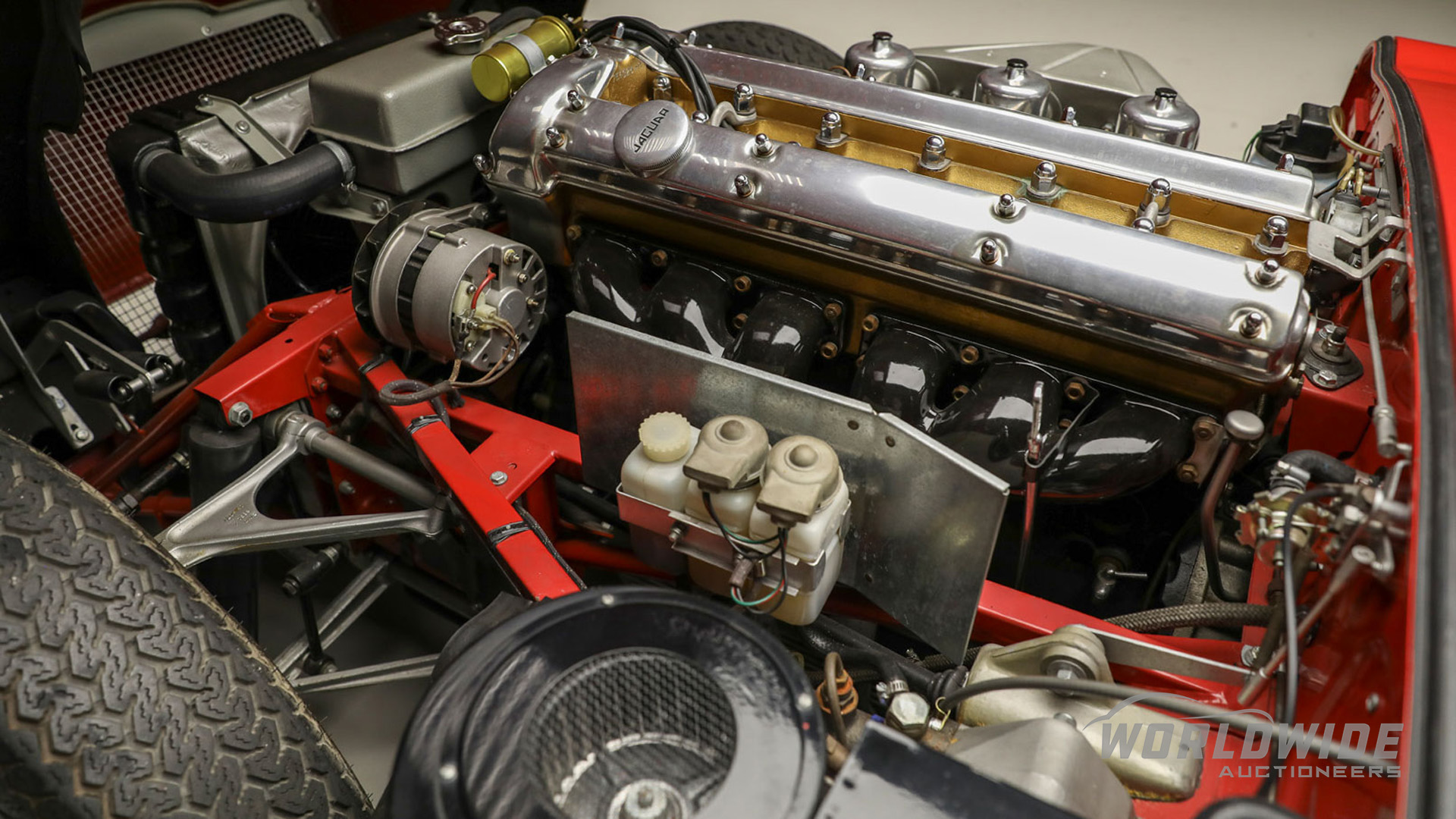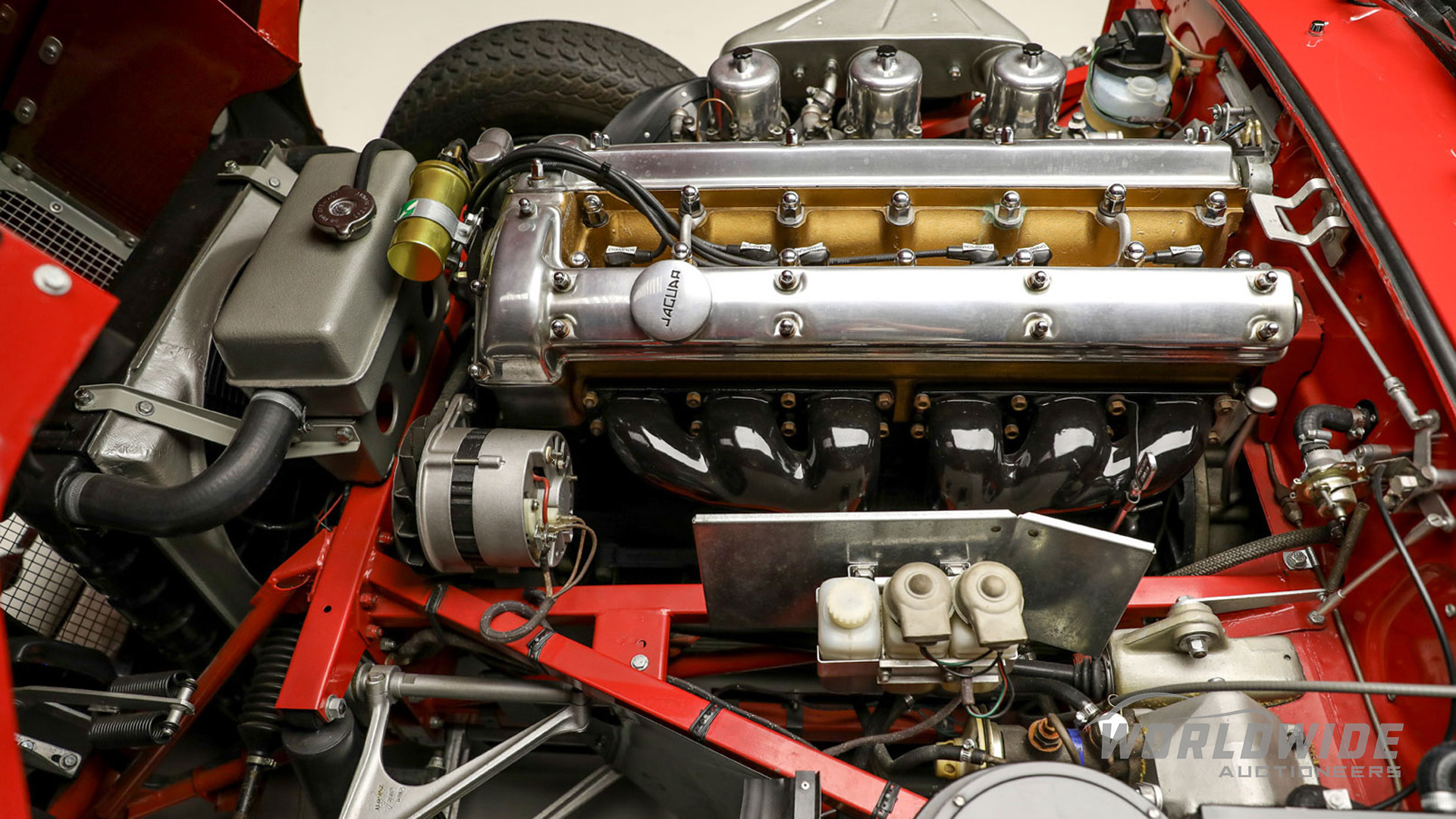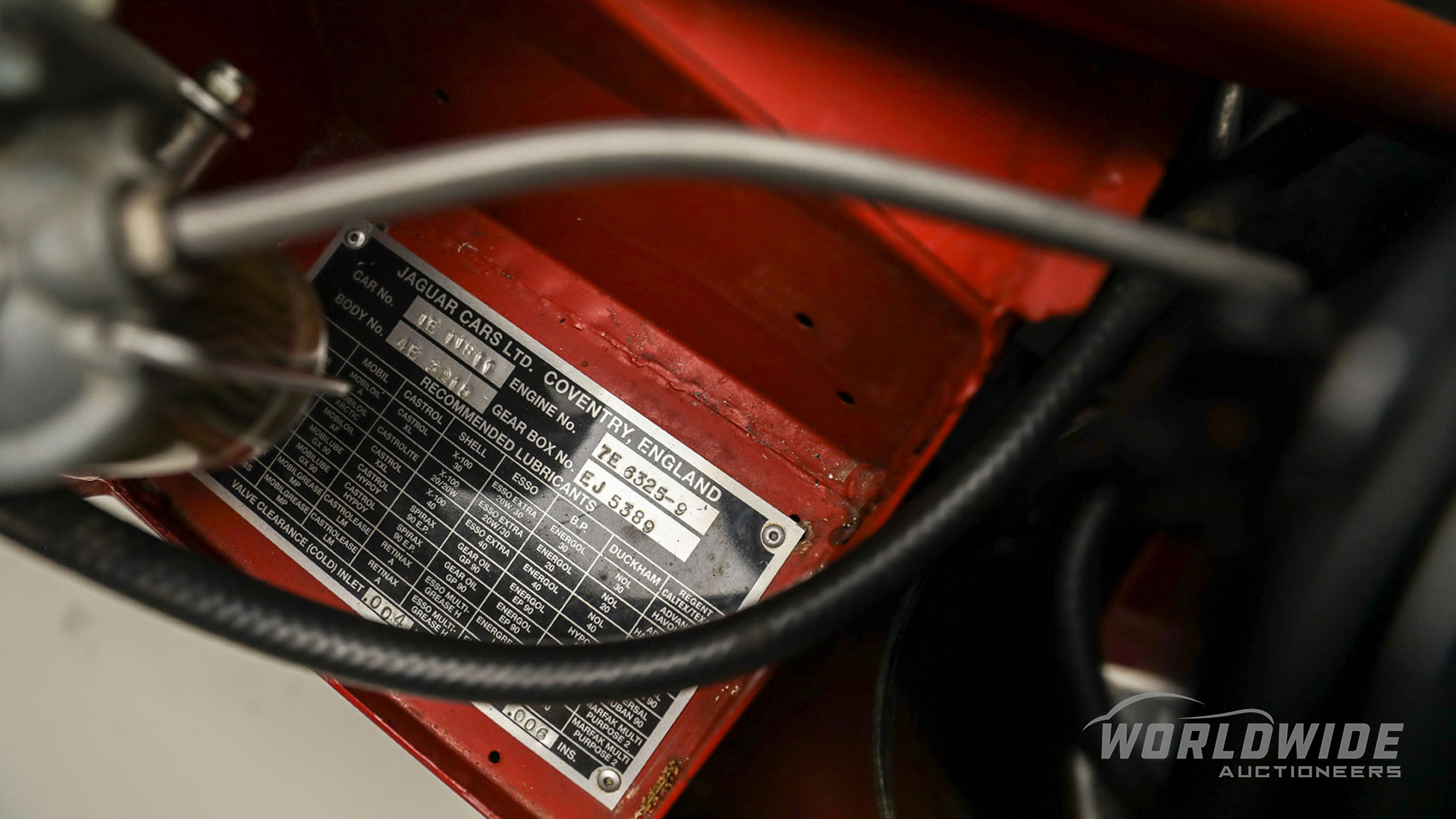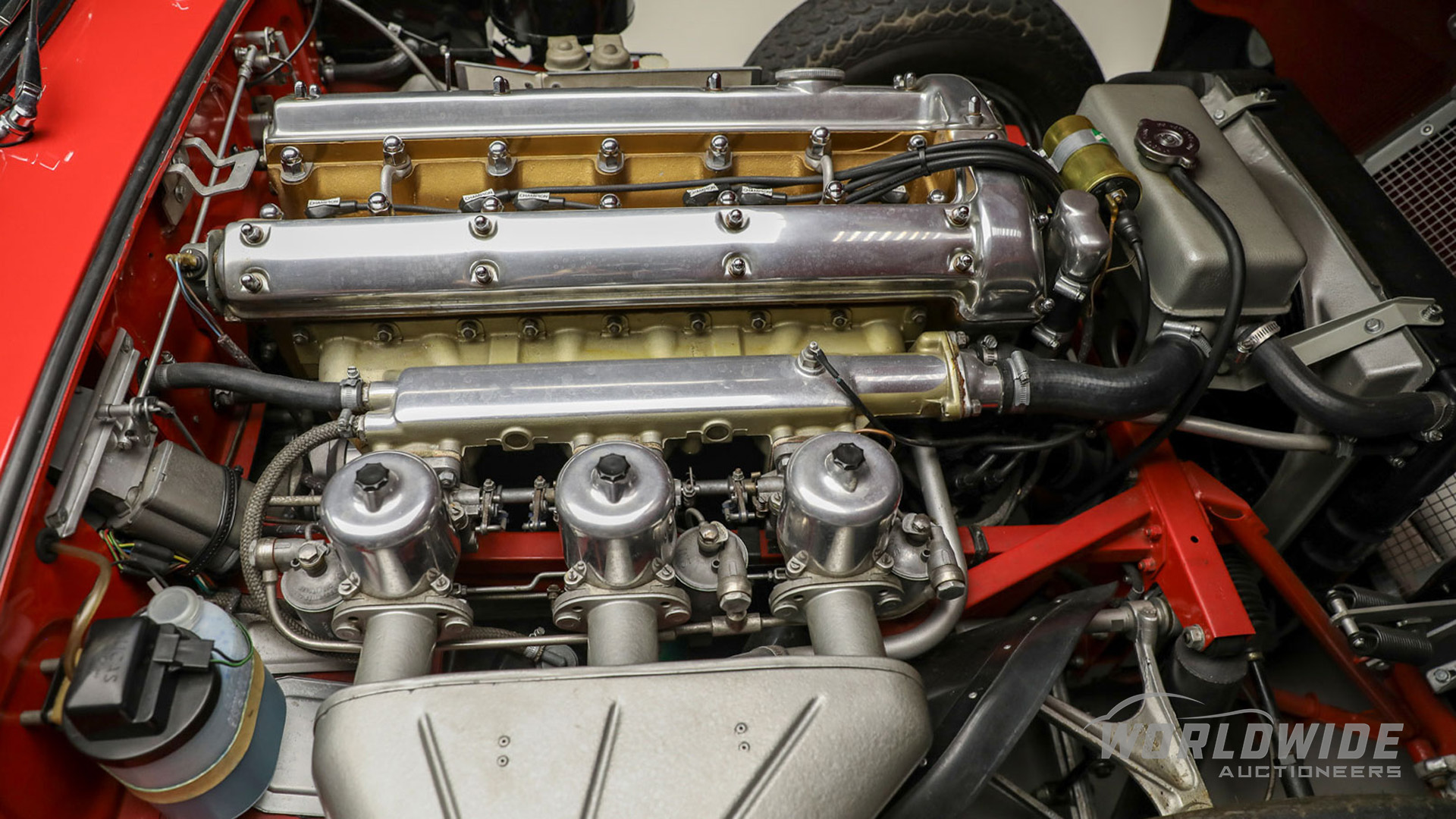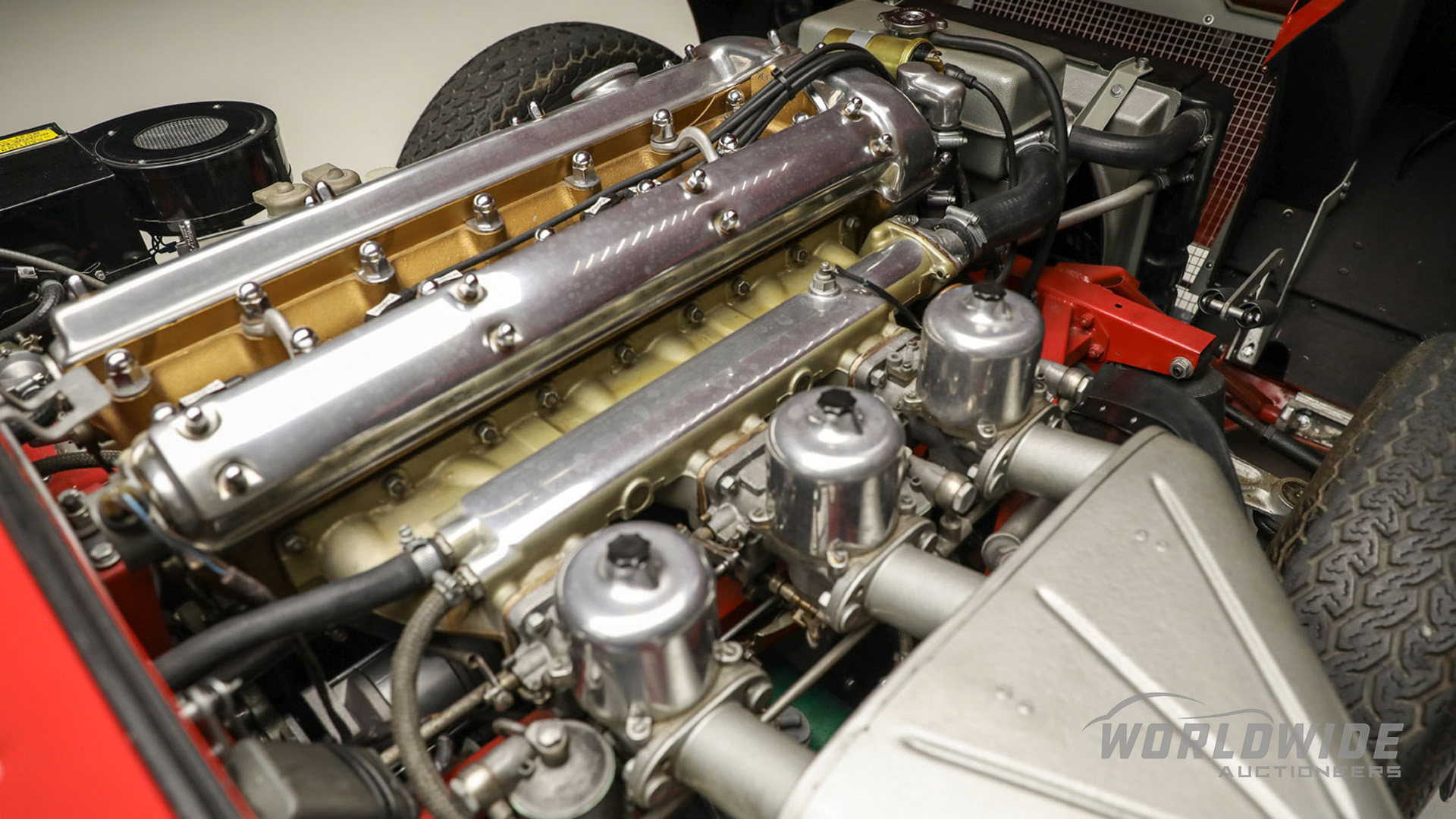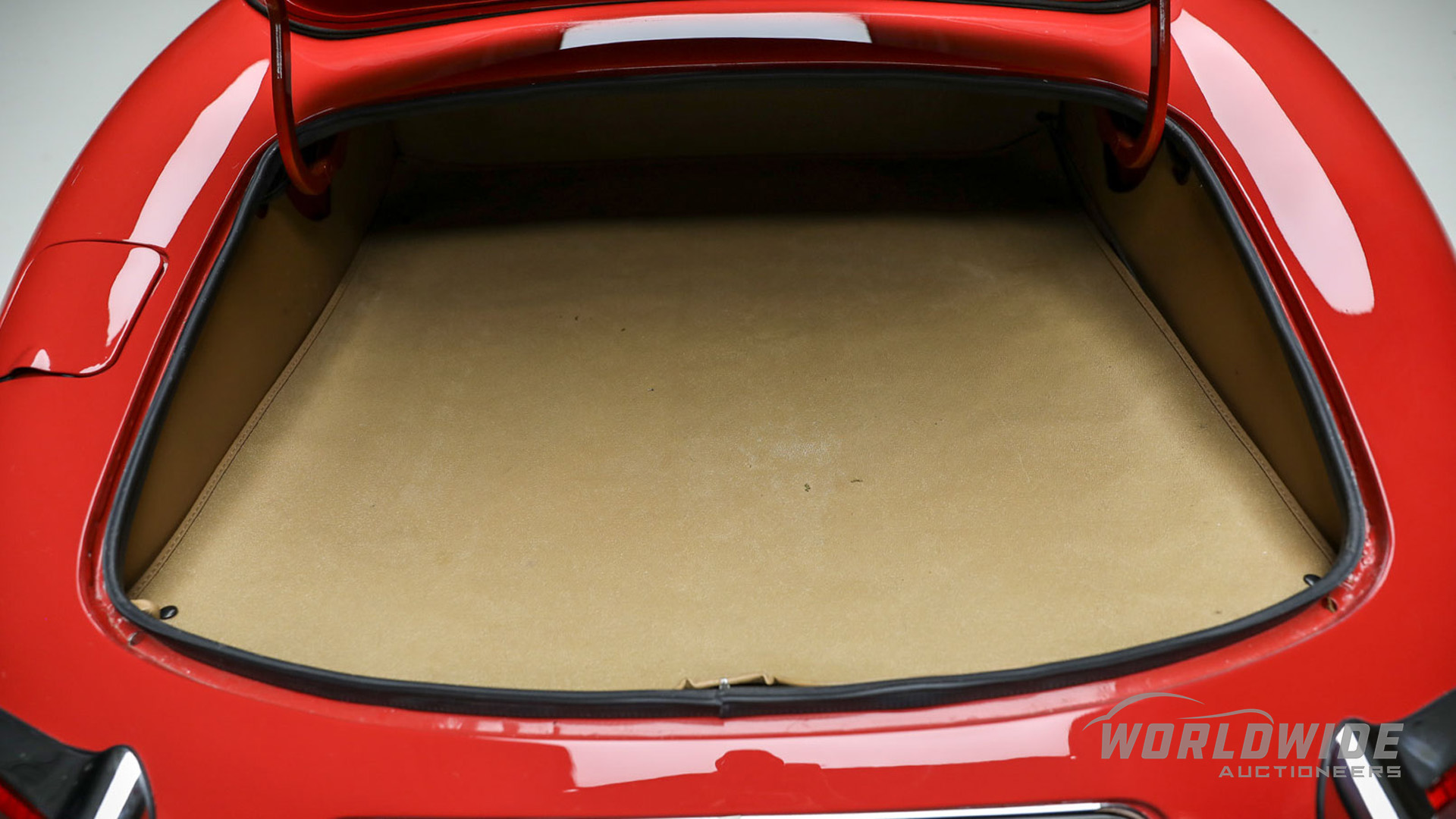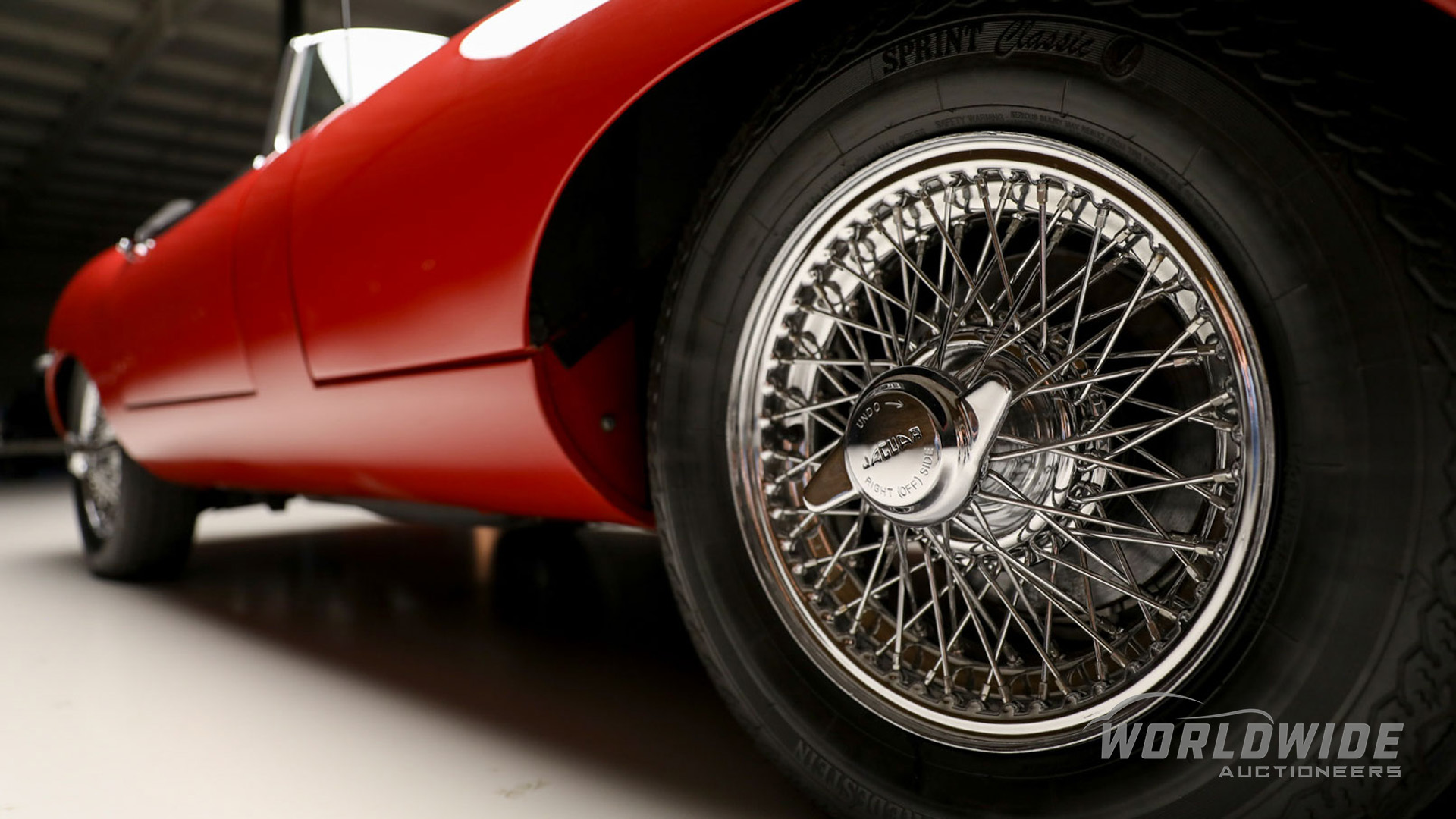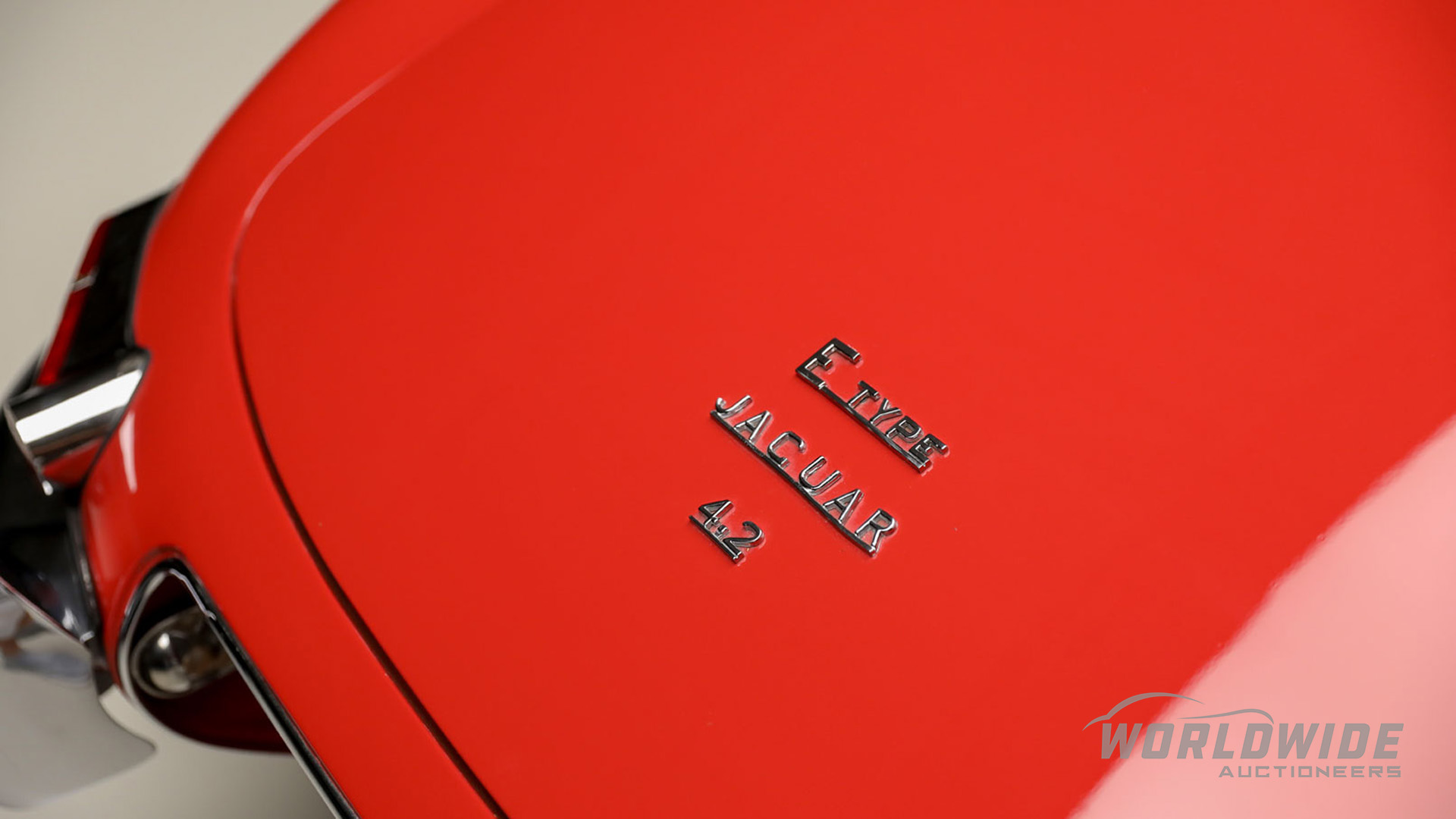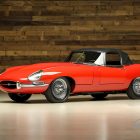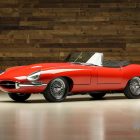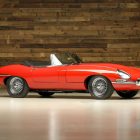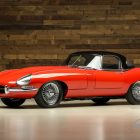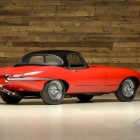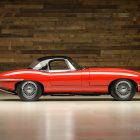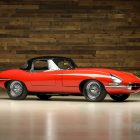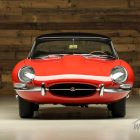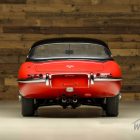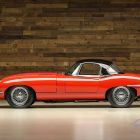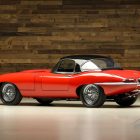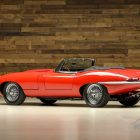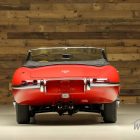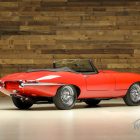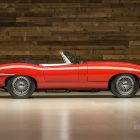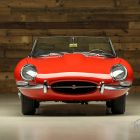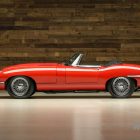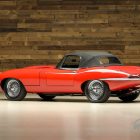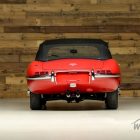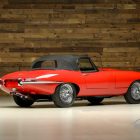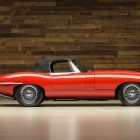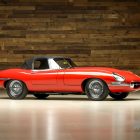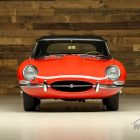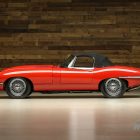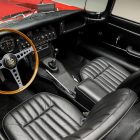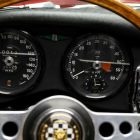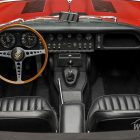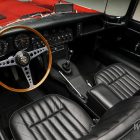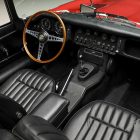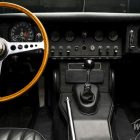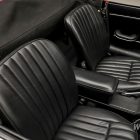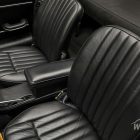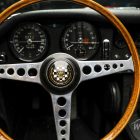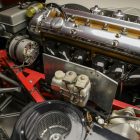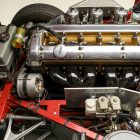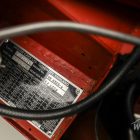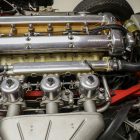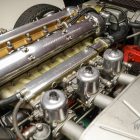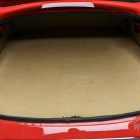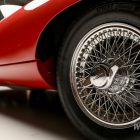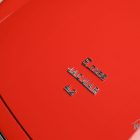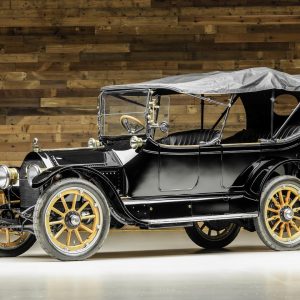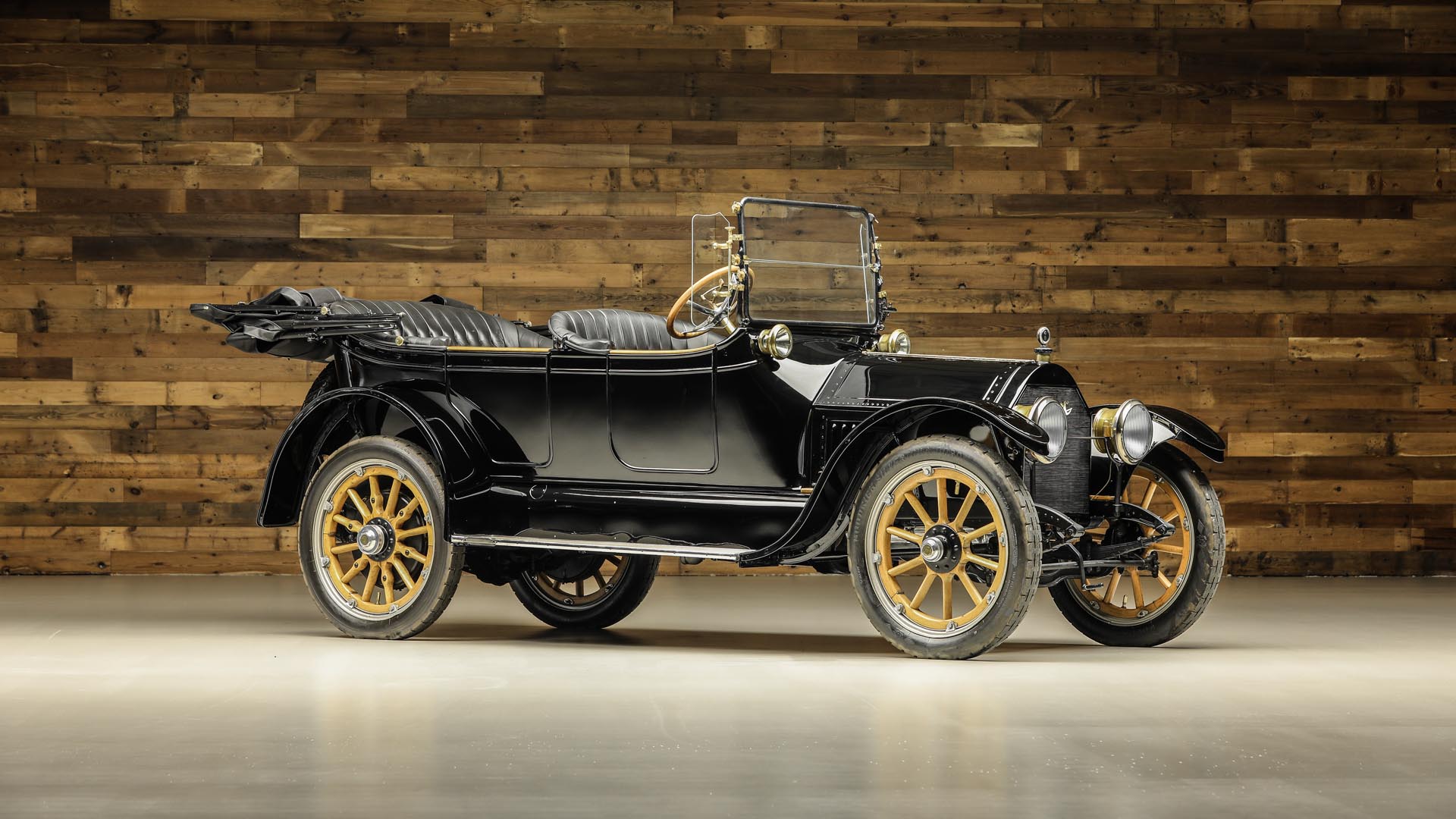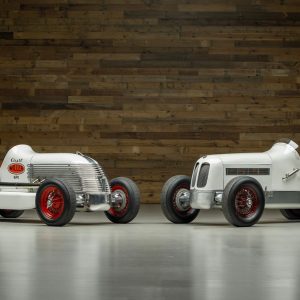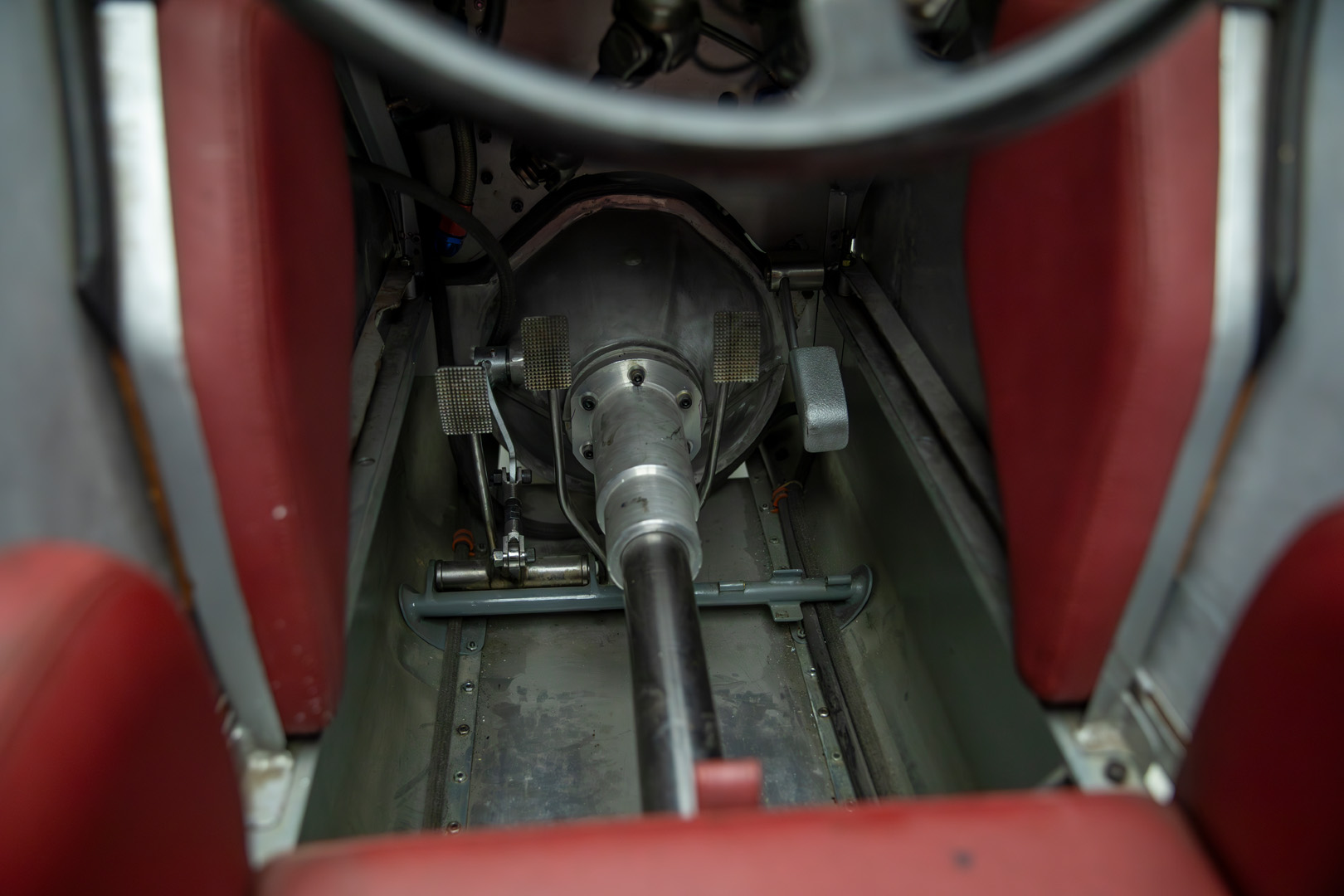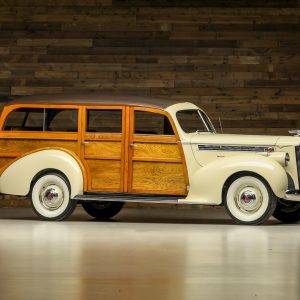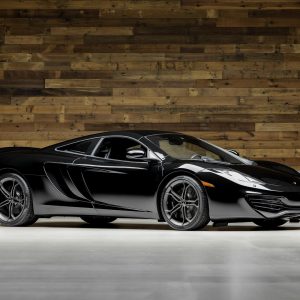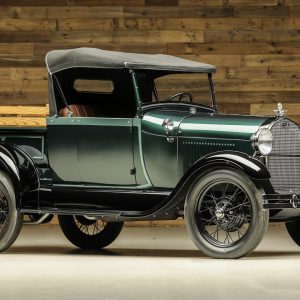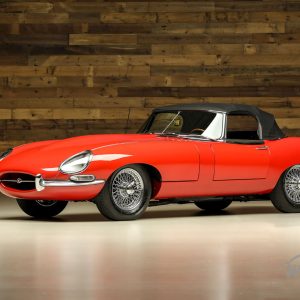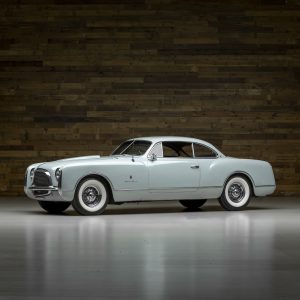Description
The Auburn Auction
LOT 145
Introduced in 3.8-litre form in 1961, the Jaguar E-Type, or XKE in the USA, caused a sensation when it appeared, with instantly classic lines and 150-mph top speed. While the car’s stupendous straight-line performance and gorgeous looks grabbed the headlines, there was a lot more to the E-Type beneath the skin. Just as in the D-Type, a monocoque tub formed the main body/chassis structure while a tubular spaceframe extended forward to support the engine. The latter was the same 3.8-litre, triple-carburetor, ‘S’ unit first offered as an option on the preceding XK150. With a claimed 265 horsepower on tap, the E-Type’s performance did not disappoint: firstly, because it weighed around 500 lbs less than the XK150 and secondly because aerodynamicist Malcolm Sayer used the experience gained with the D-Type to create one of the most elegant and efficient shapes ever to grace a motor car. At the rear, the E-Type’s suspension broke new ground for a large-capacity sports car, being independent at a time when most of its major rivals relied on the traditional live rear axle. Dunlop disc brakes were fitted to all four wheels; those at the rear were mounted inboard alongside the differential to reduce un-sprung weight.
Launched in October 1964, the 4.2-litre E-Type came with a more user-friendly, all-synchromesh gearbox and superior Lockheed brake servo as part of the improved specification alongside the bigger, torquier engine. Apart from ‘4.2’ badging, the car’s external appearance was unchanged, but beneath the skin, there were numerous detail improvements. These mainly concerned the cooling and electrical systems, the latter gaining an alternator and adopting the industry-standard negative earth, while the interior boasted a matte black dashboard and improved seating arrangements. The E-Type’s top speed remained unchanged at around 150 mph, the main performance gain resulting from the larger engine offering improved flexibility.
A 1966 Series I example, this Jaguar benefits from the enlarged 4.2-litre, triple SU-carbureted engine, and full synchromesh gearbox while retaining desirable, early E-Type styling elements of covered headlights, toggle switches, and over-the-bumper taillights. Completed on 25 October 1965, the open two-seater presented here was uniquely trimmed at the factory in Opalescent Maroon over maroon leather upholstery. A left-hand-drive example, the car was dispatched on 16 November 1965 for sale through Jaguar Cars of New York. Today, the car has been restored in striking red over black leather with a black fabric top. Notably, it is also accompanied by a factory E-Type hardtop refinished in black, a copy of its Jaguar Daimler Heritage Trust history certificate, and a selection of past service records. Desirably equipped, fully restored, and ready to show or drive, this Jaguar E-Type presents an excellent opportunity to own a highly coveted Series I model replete with the more powerful 4.2-liter engine and late-series upgrades for improved performance and drivability.

